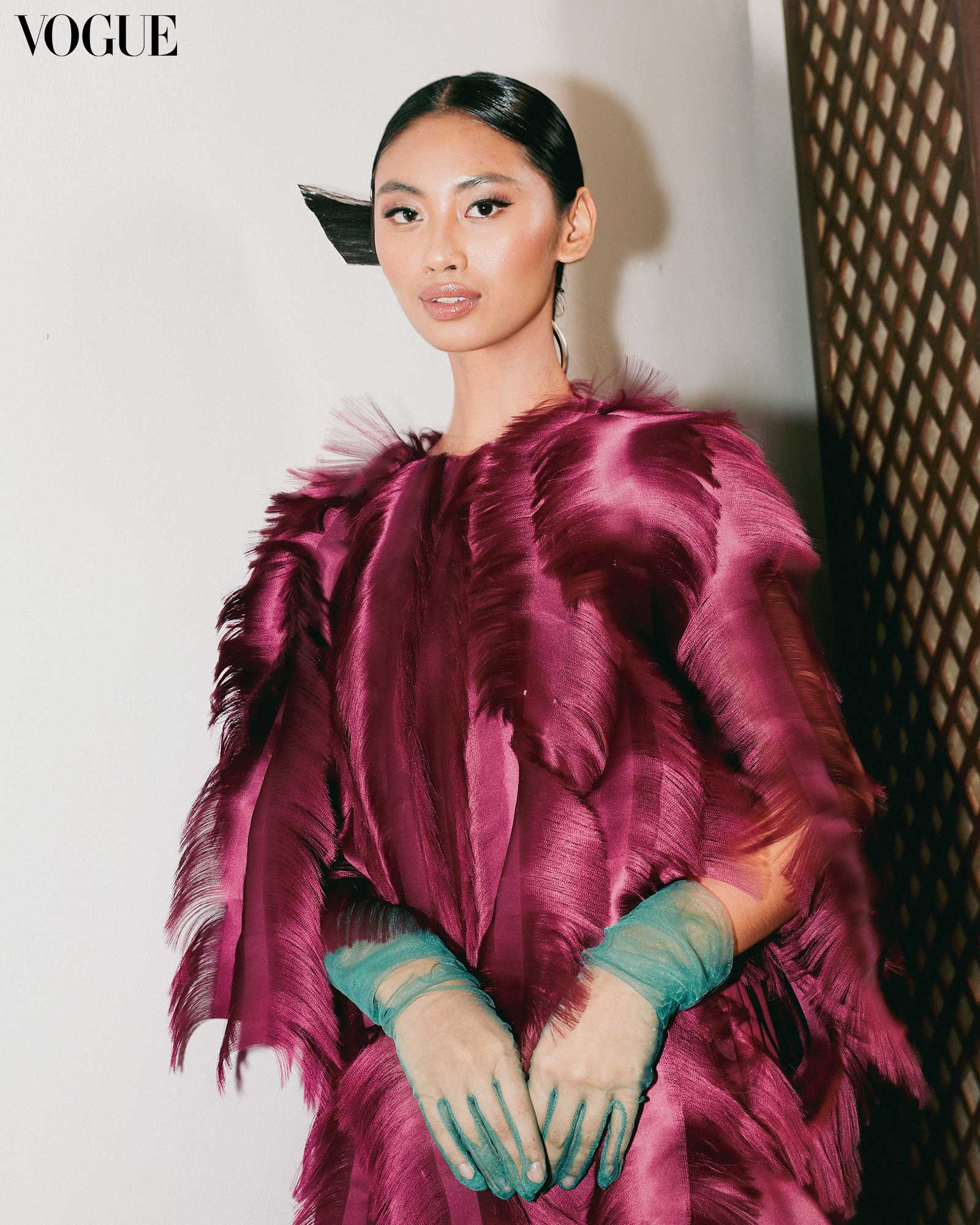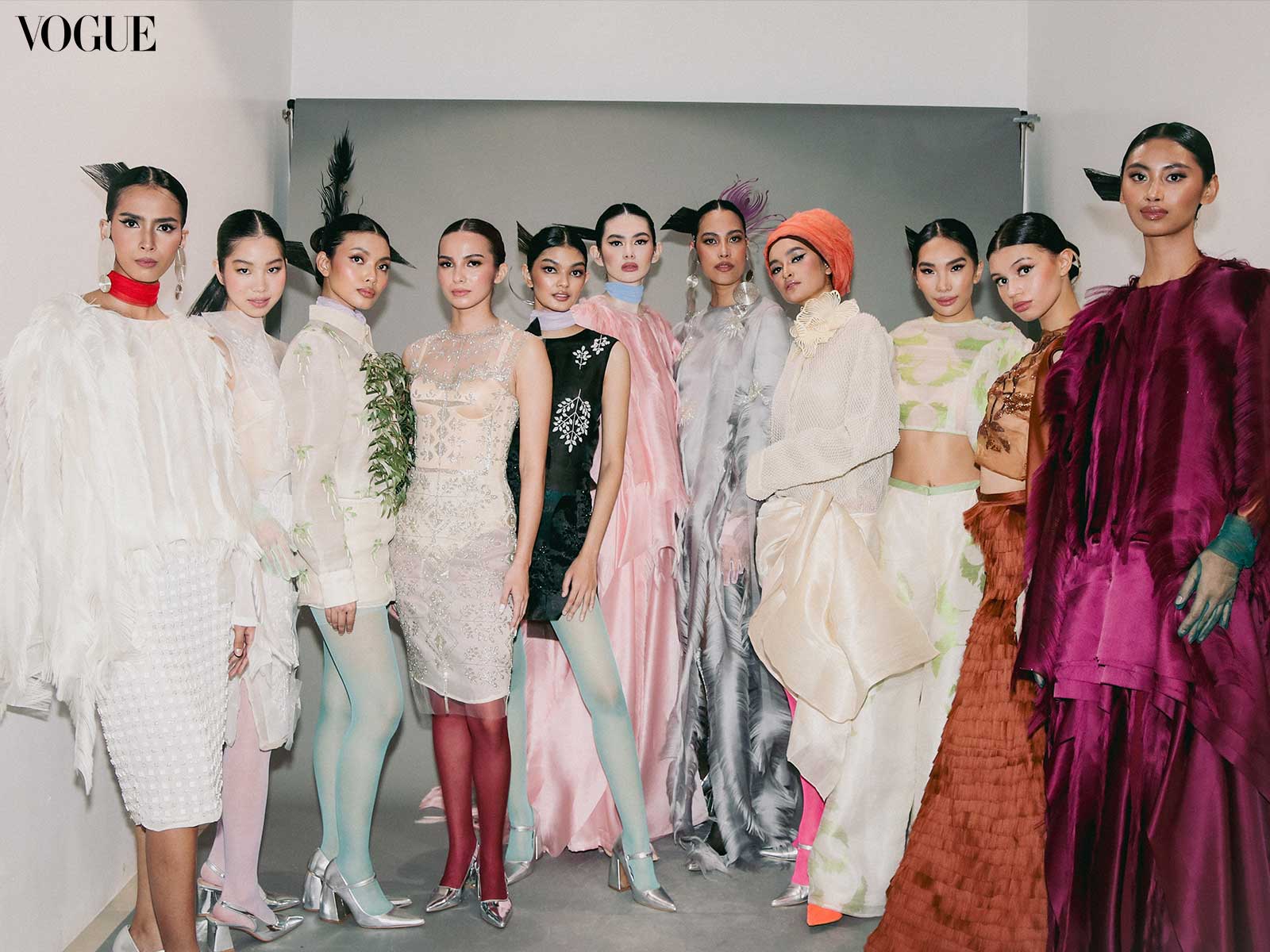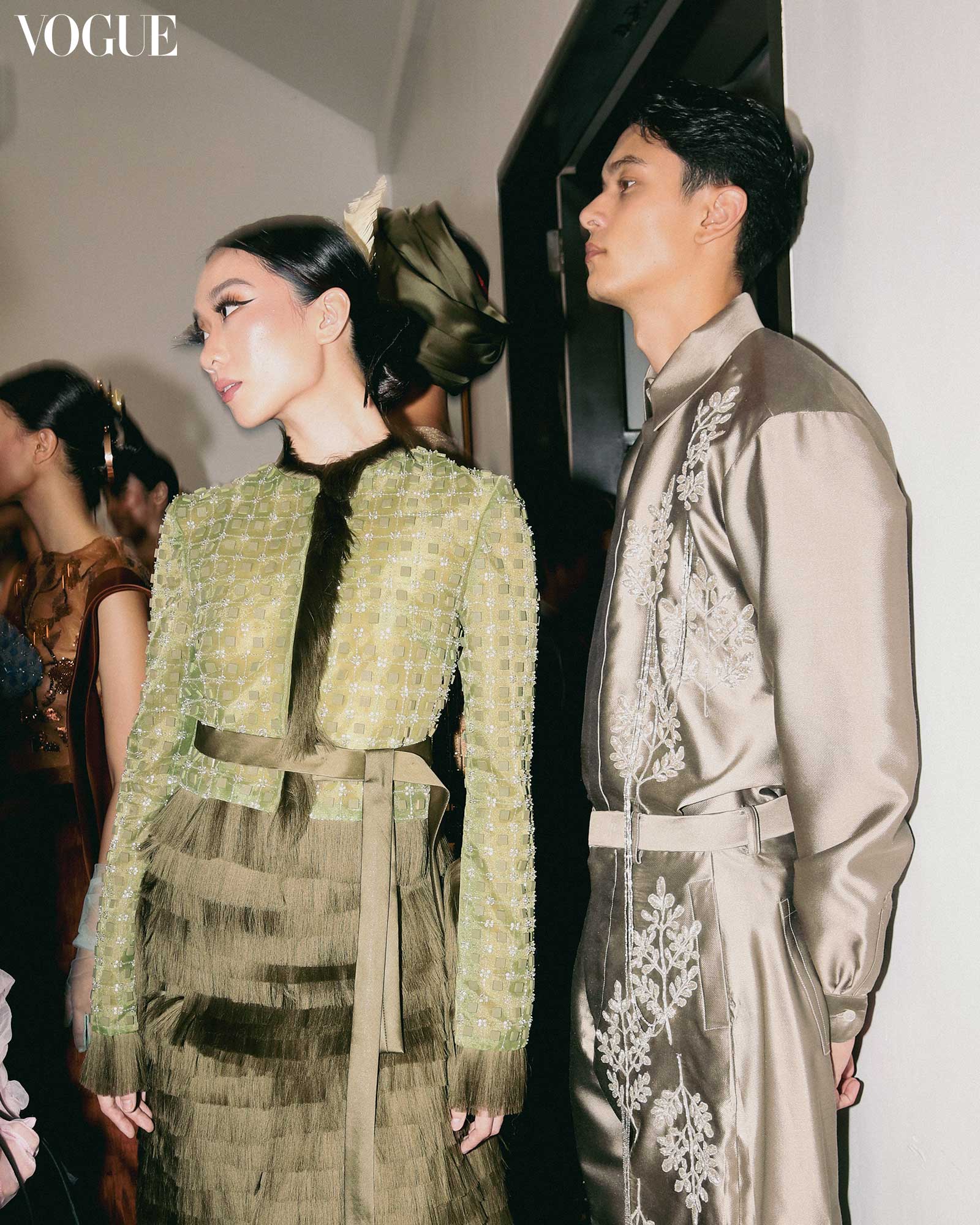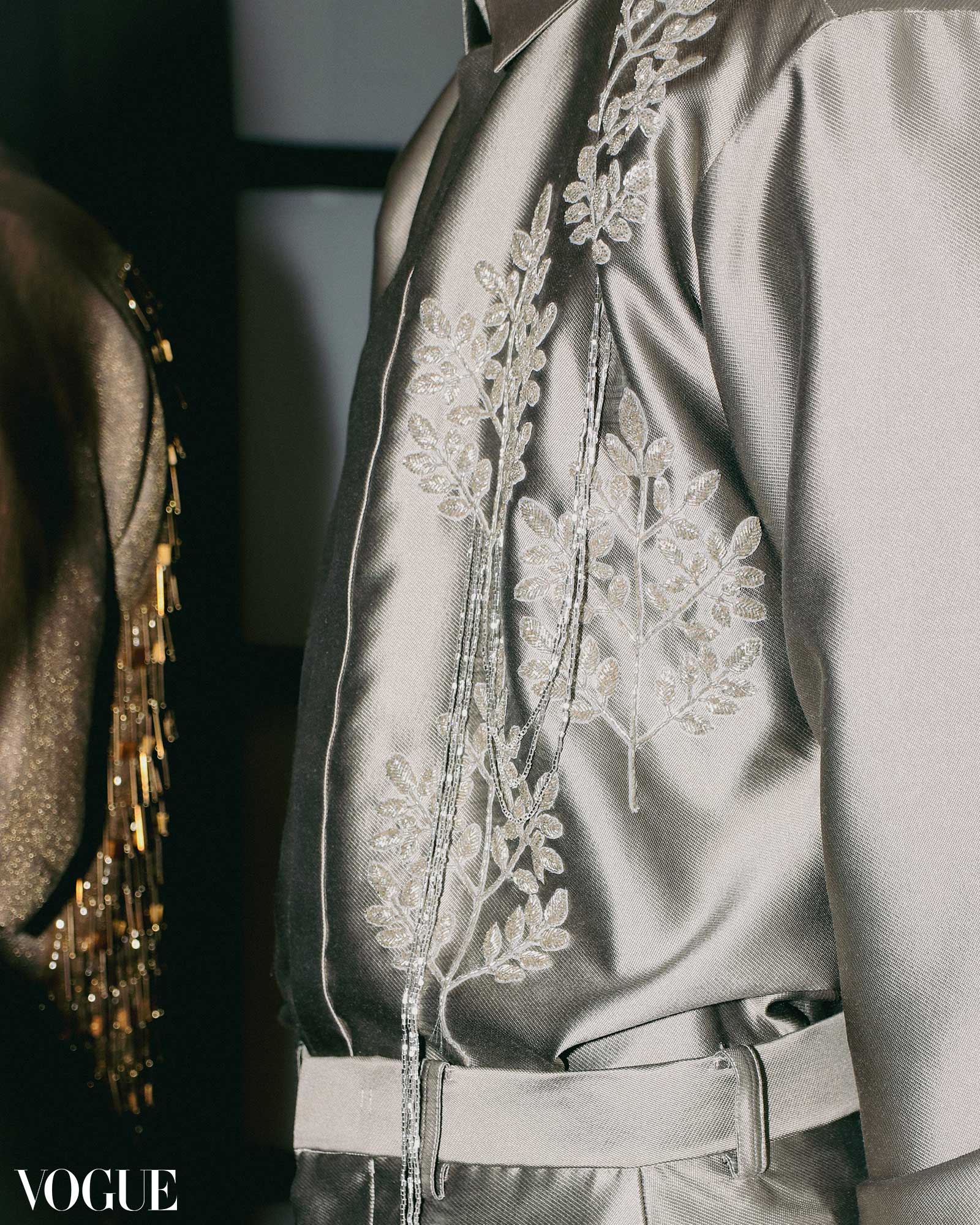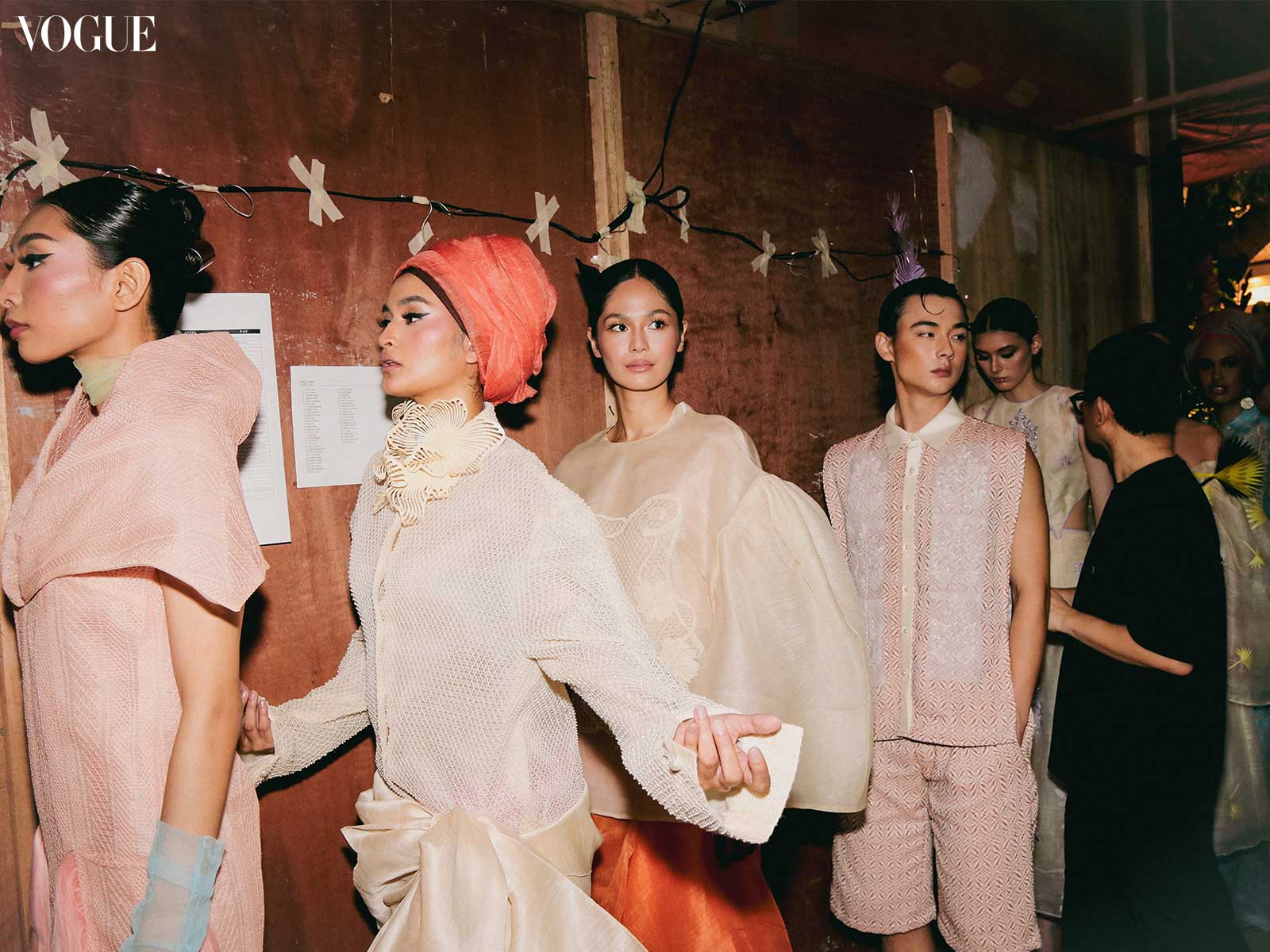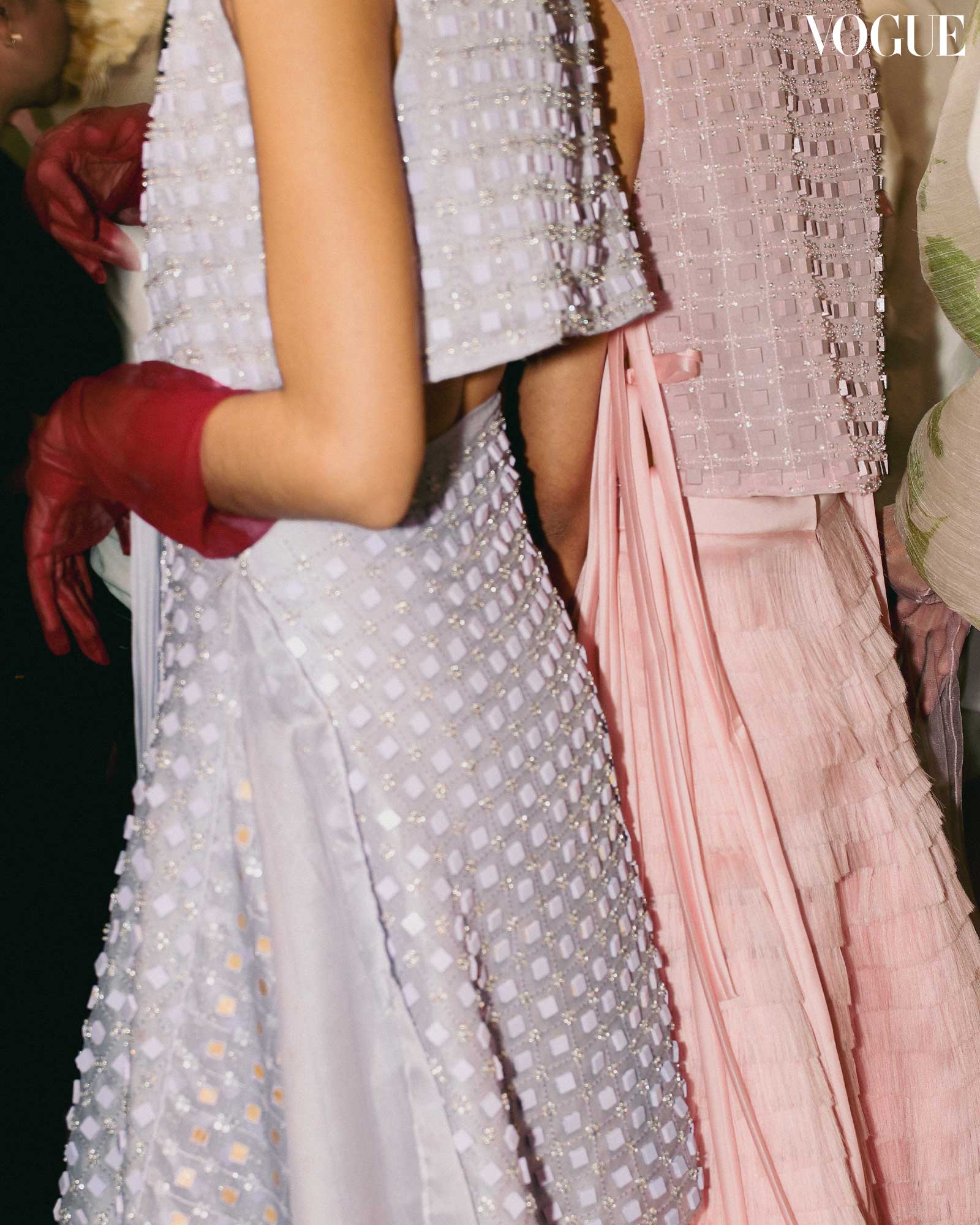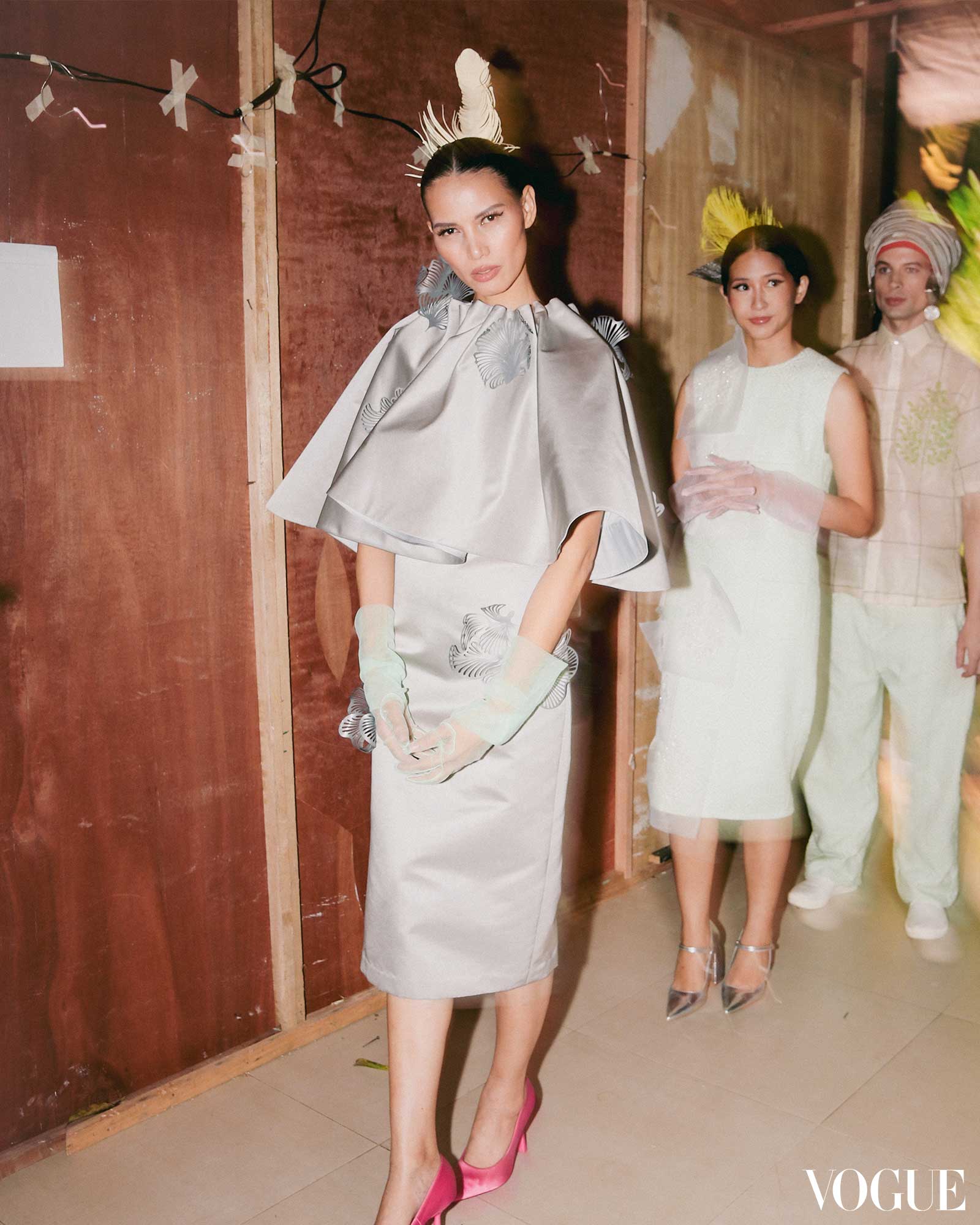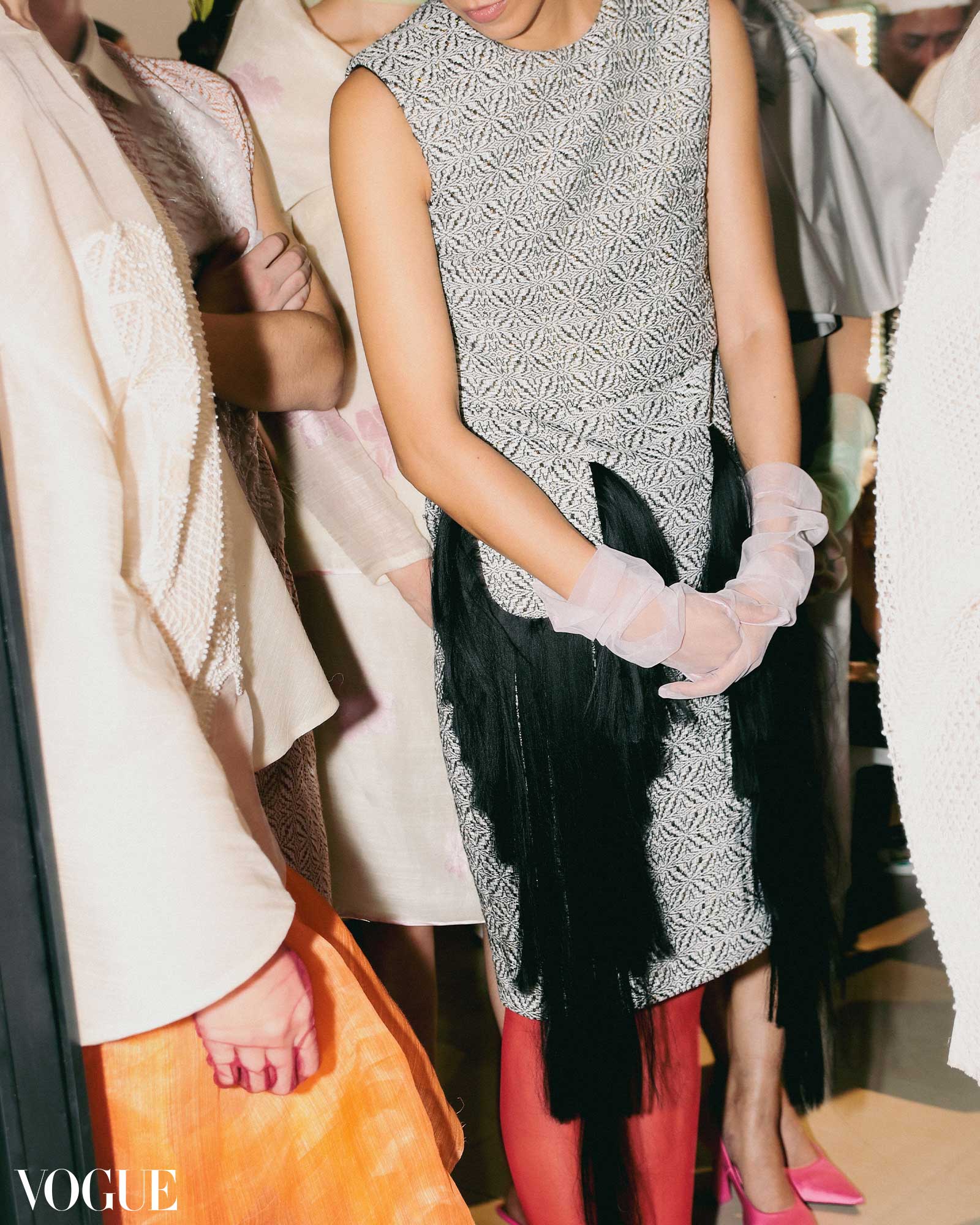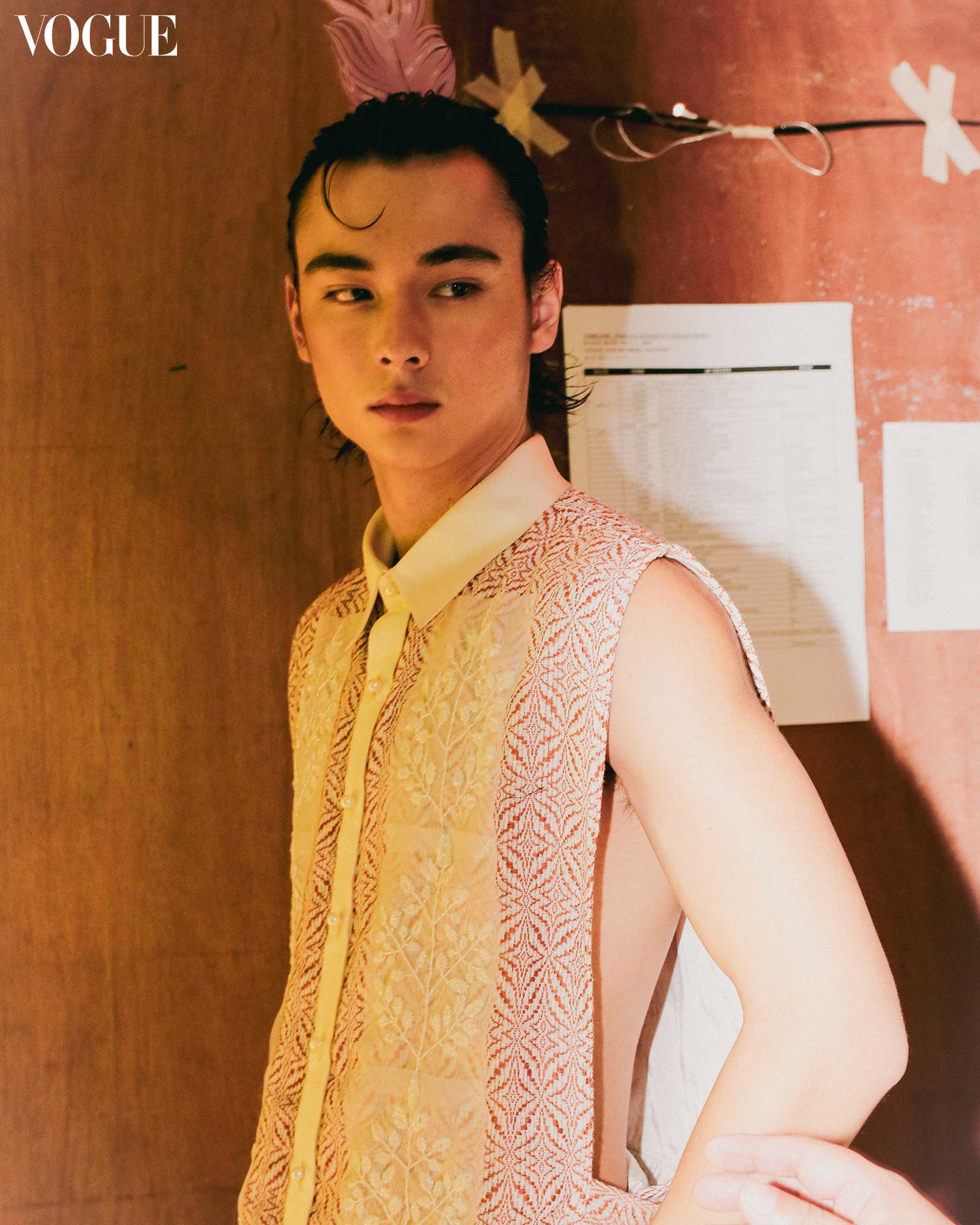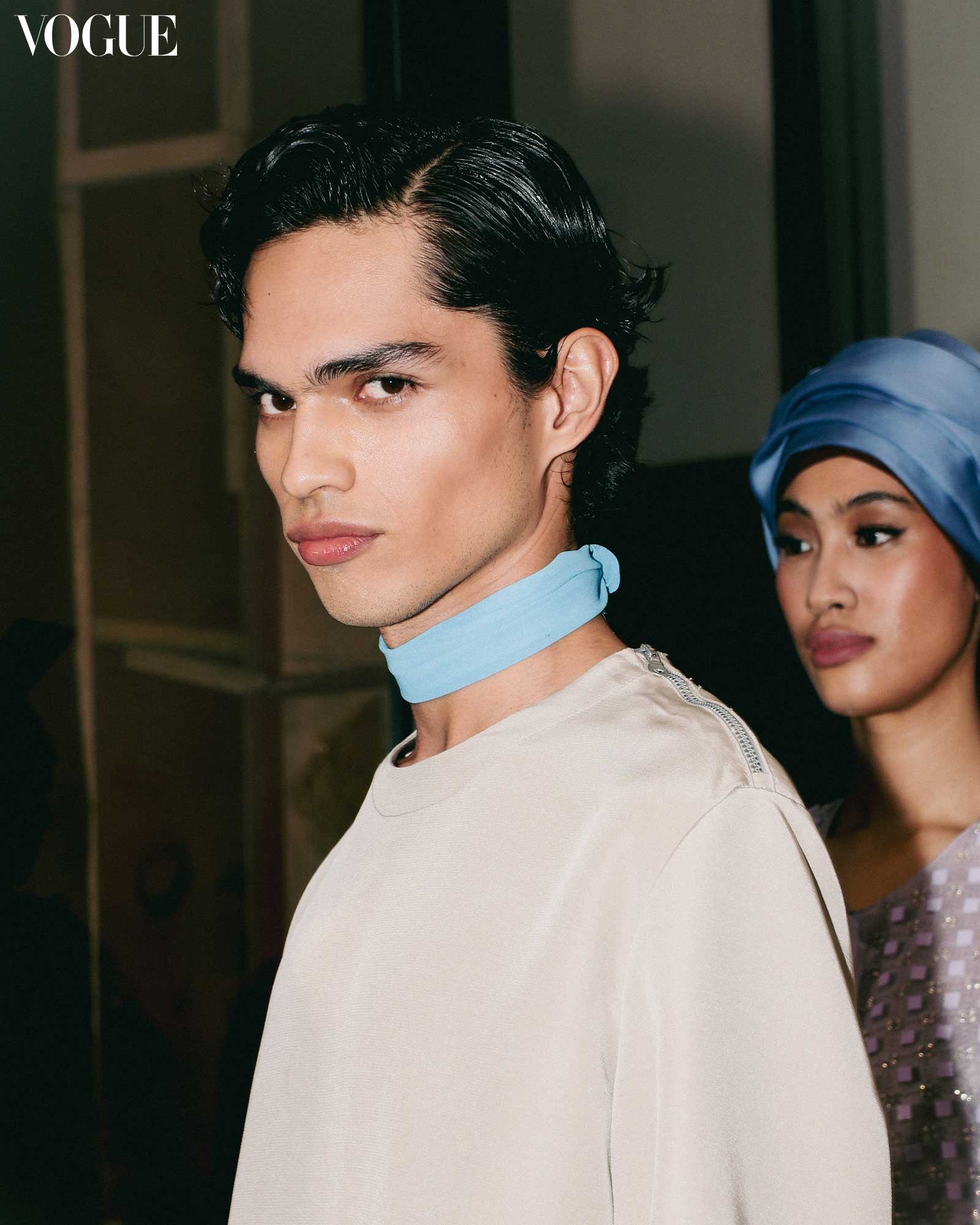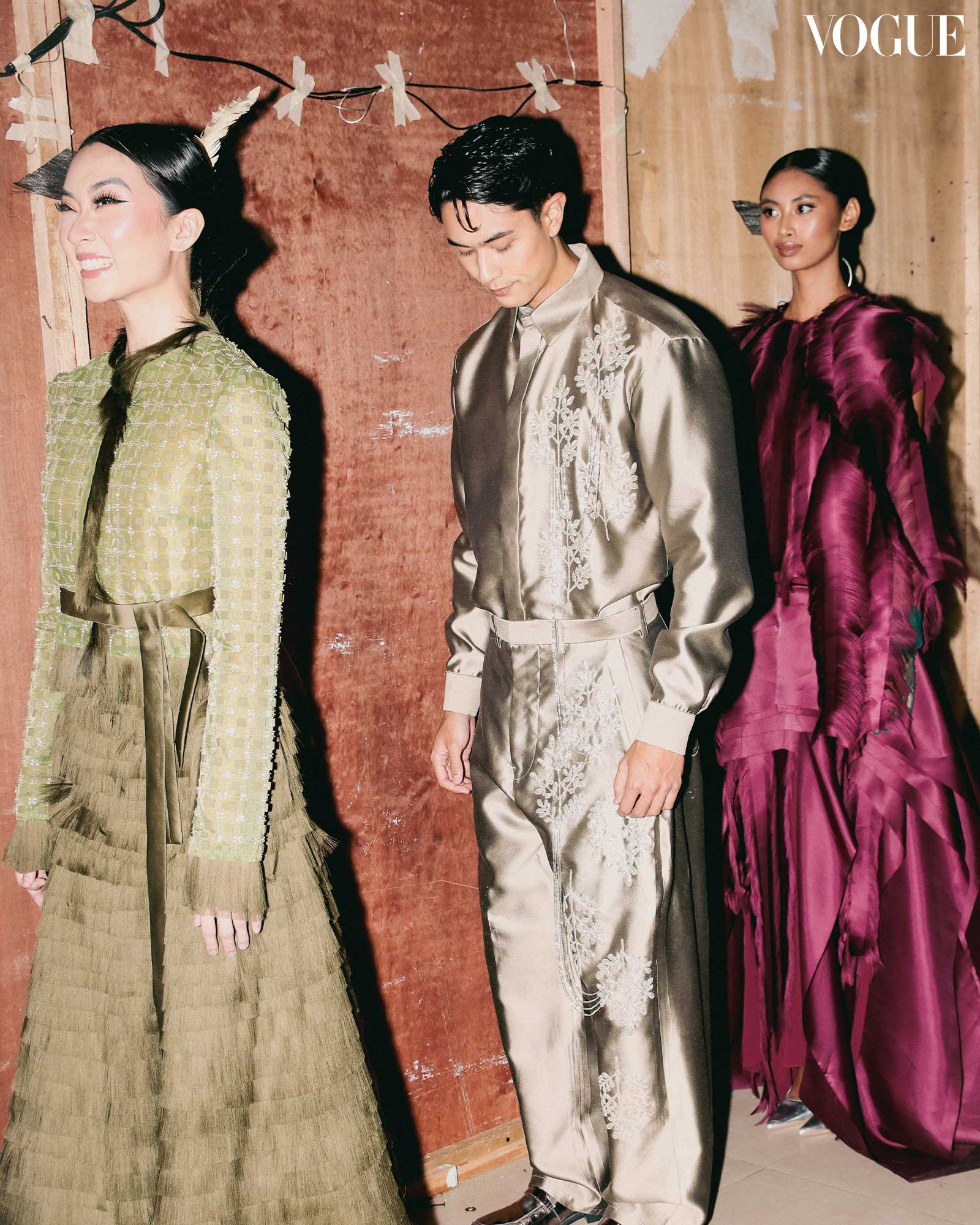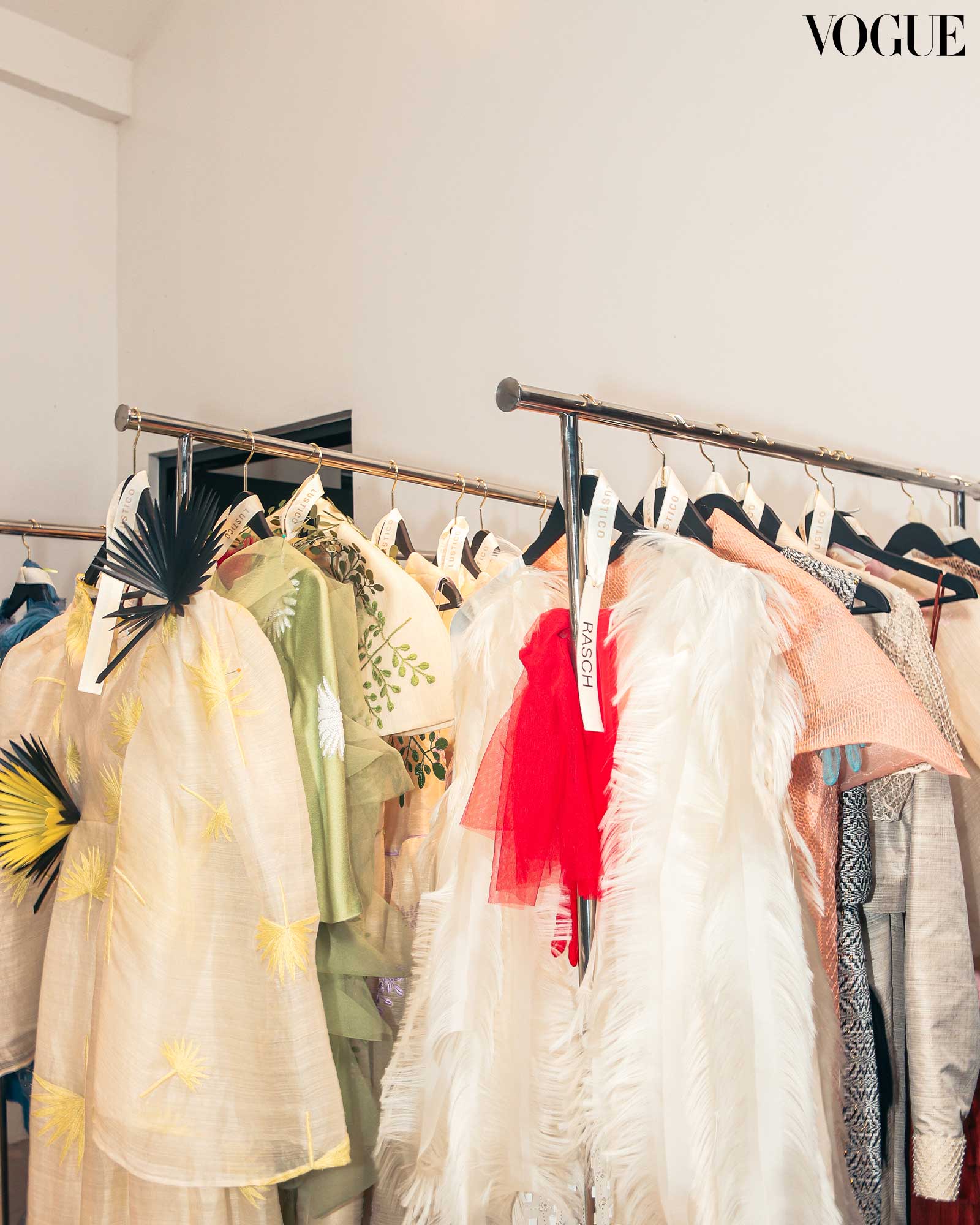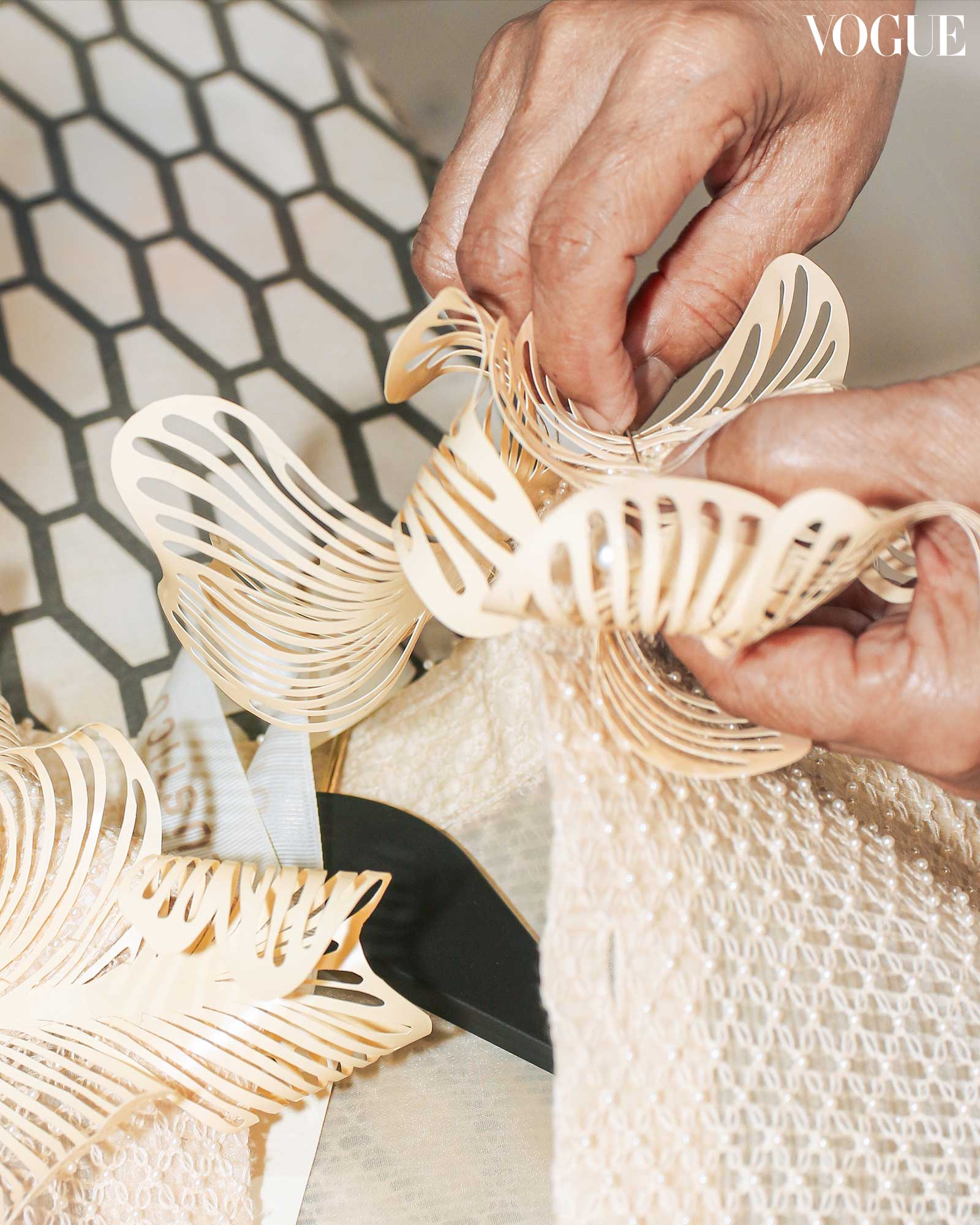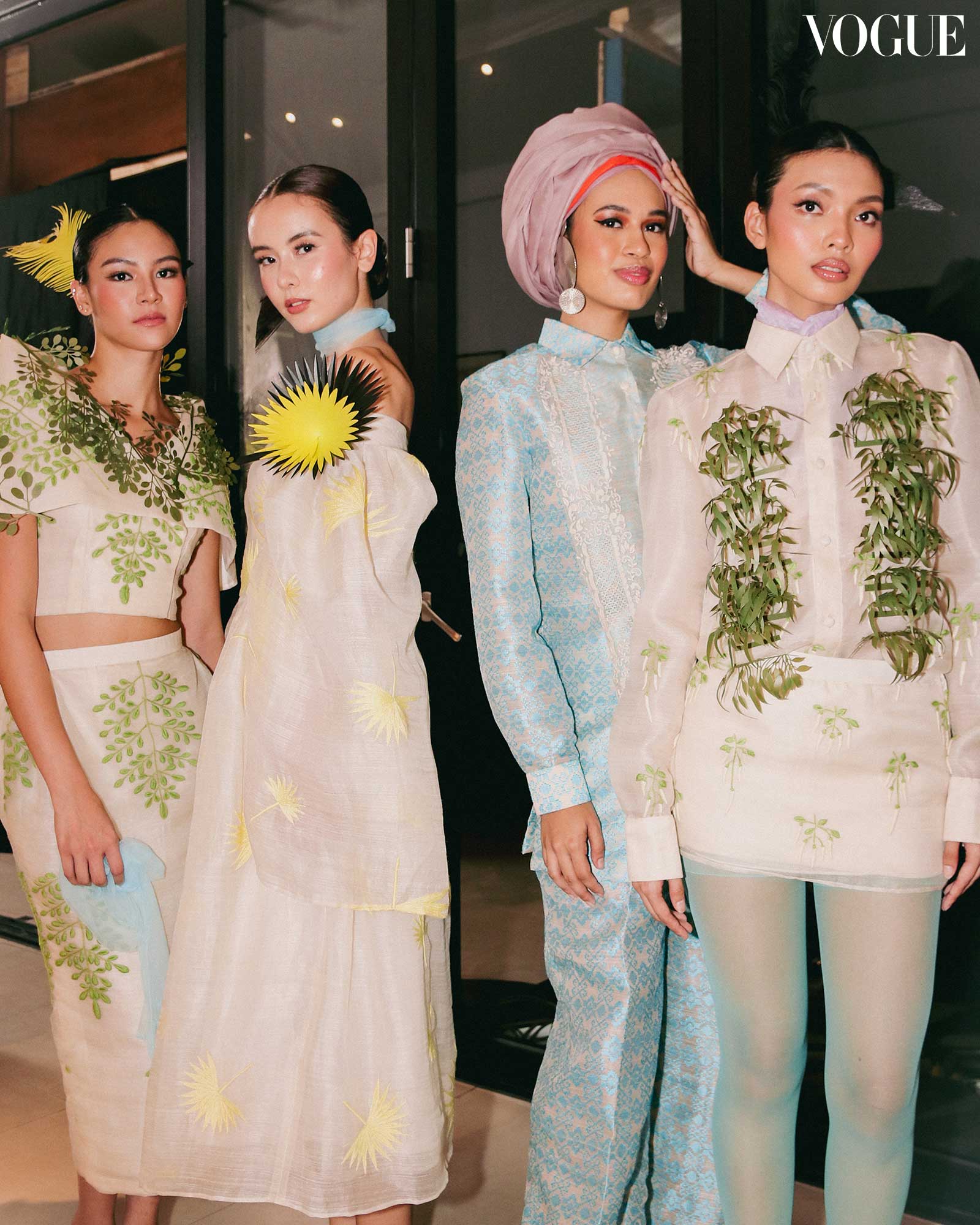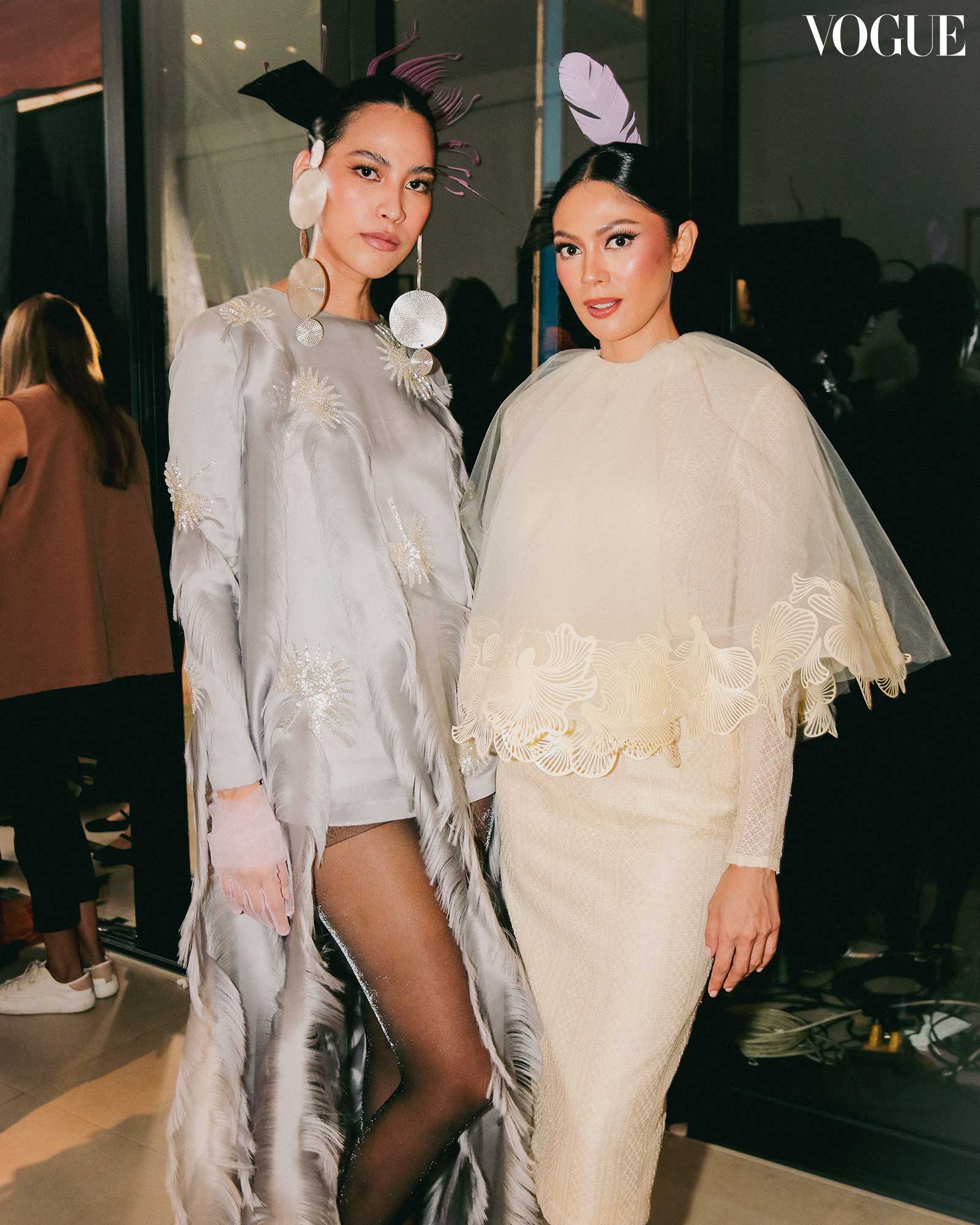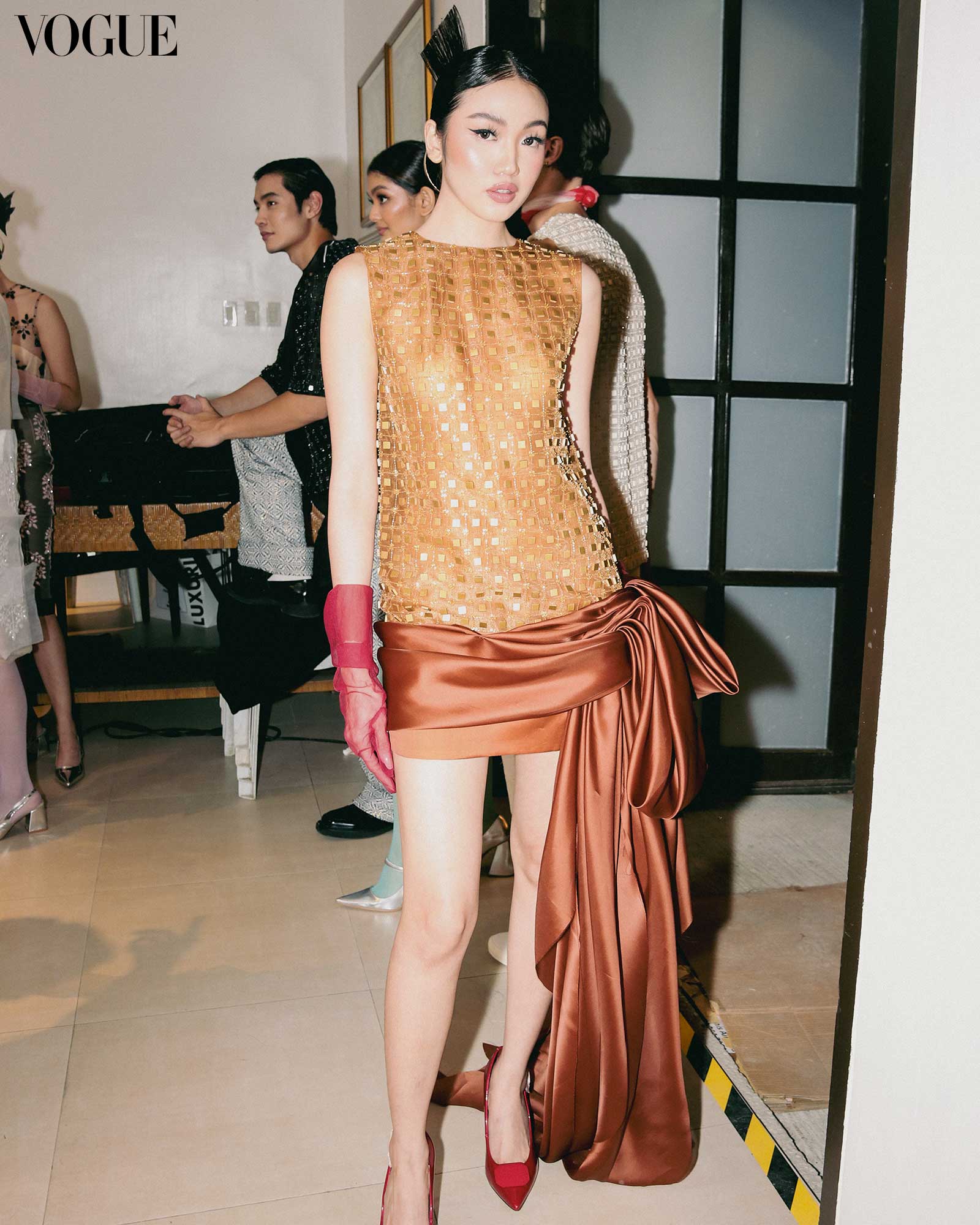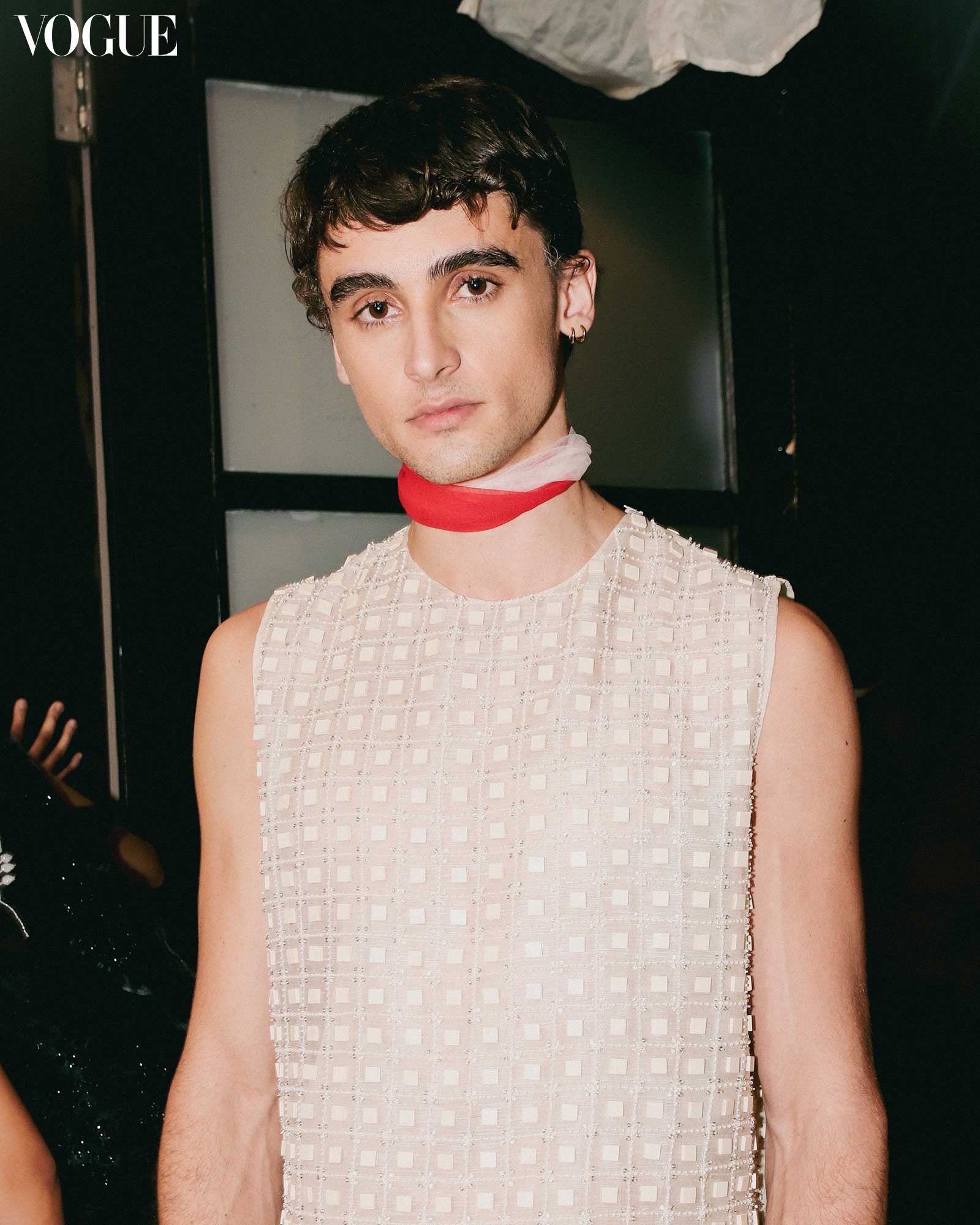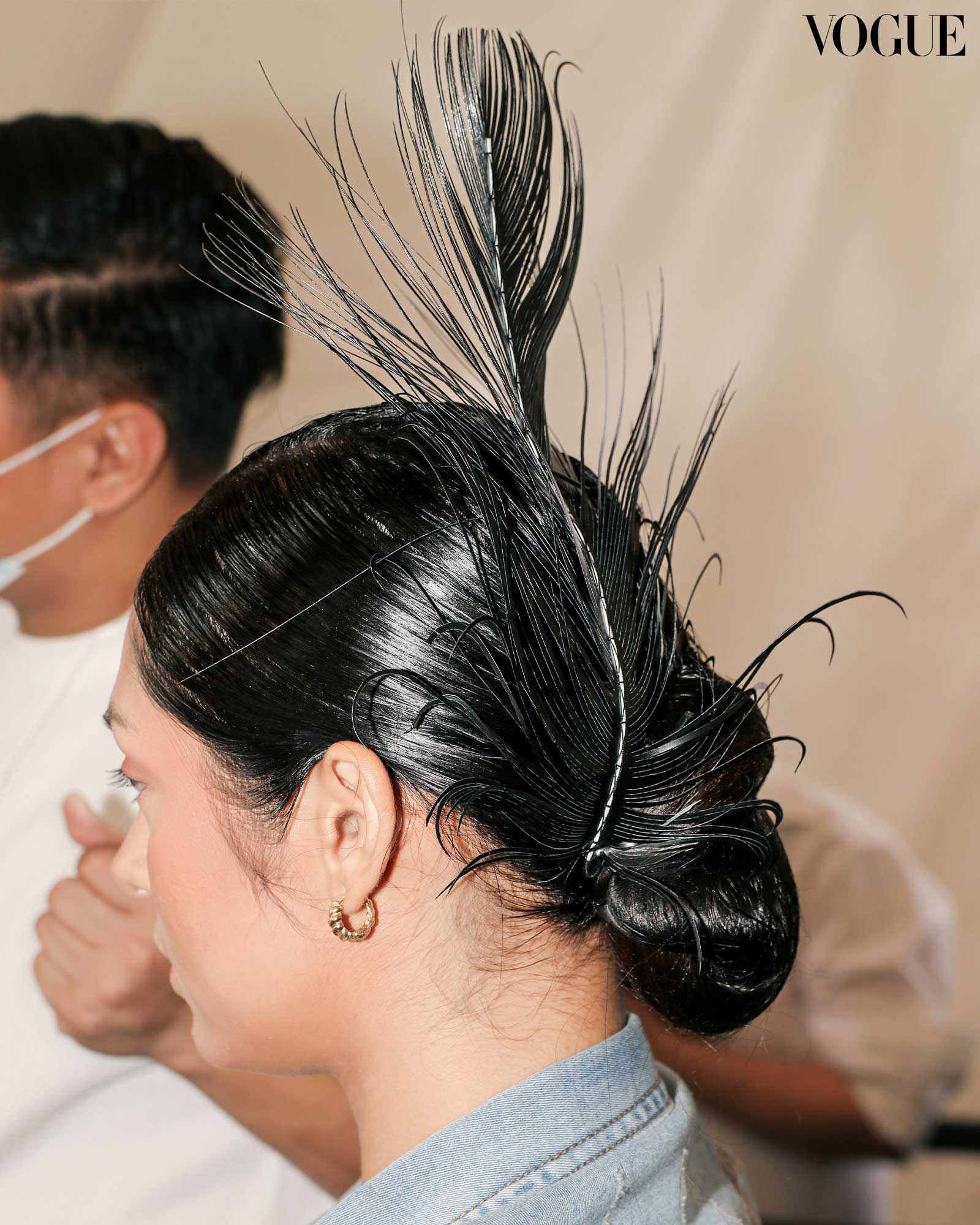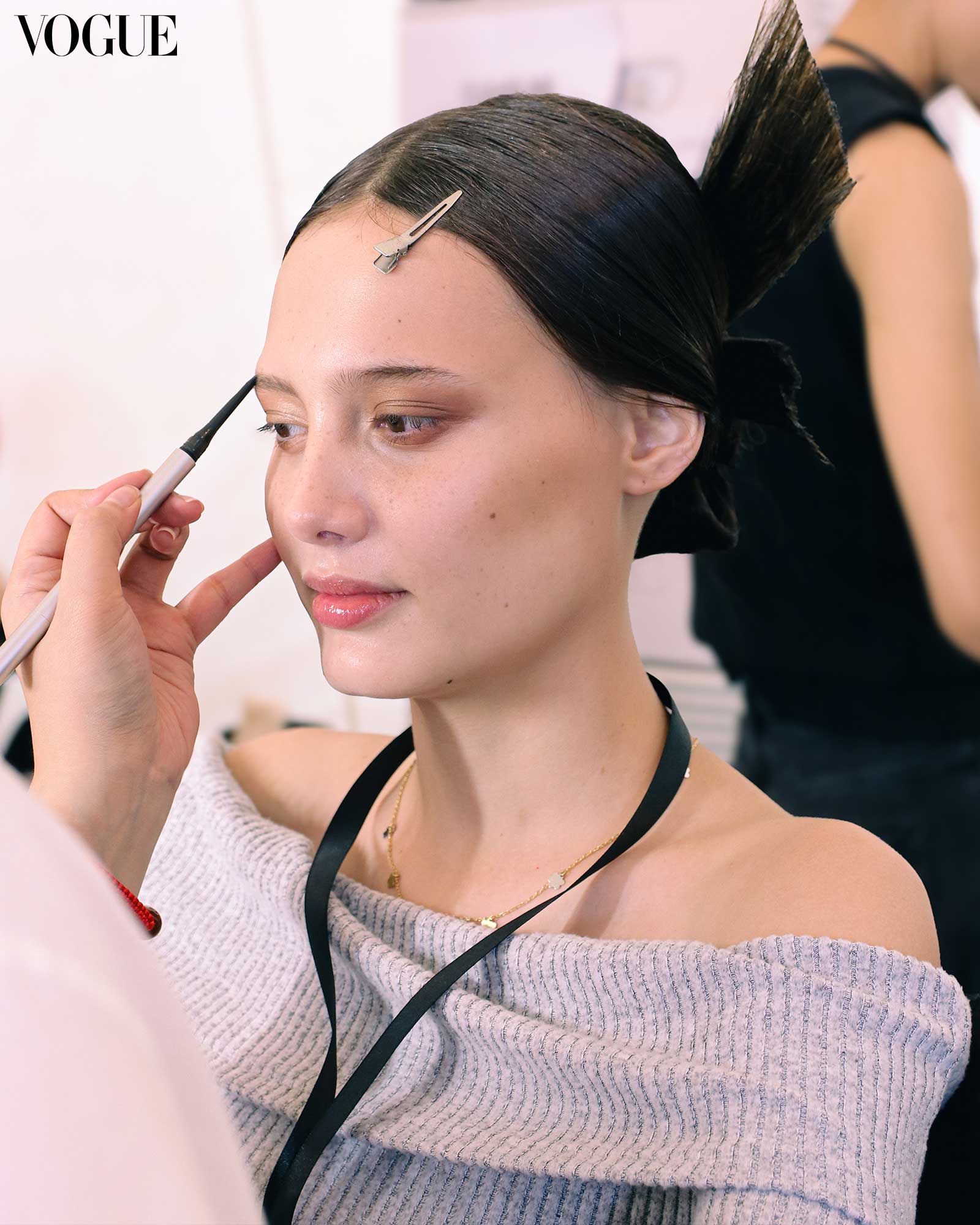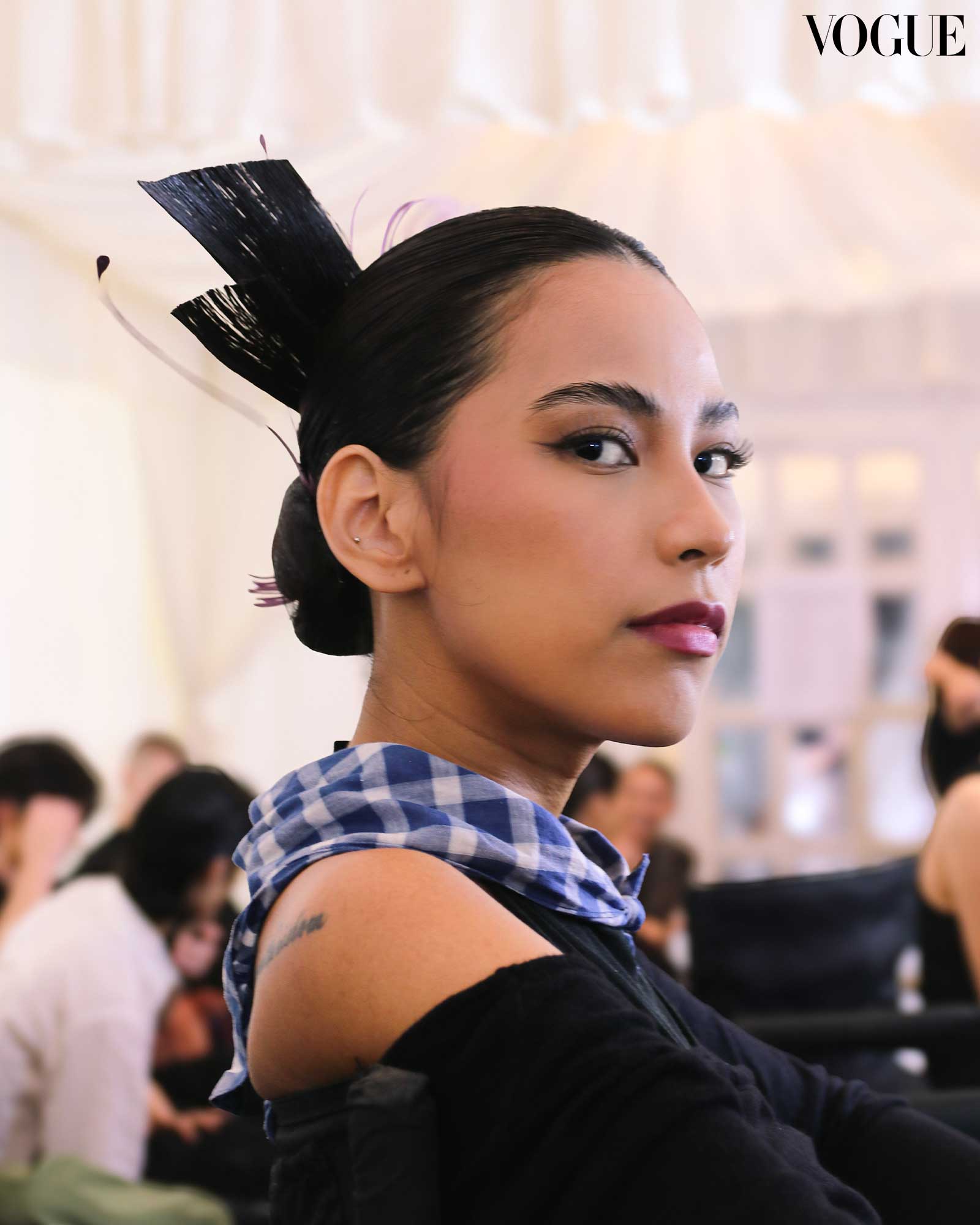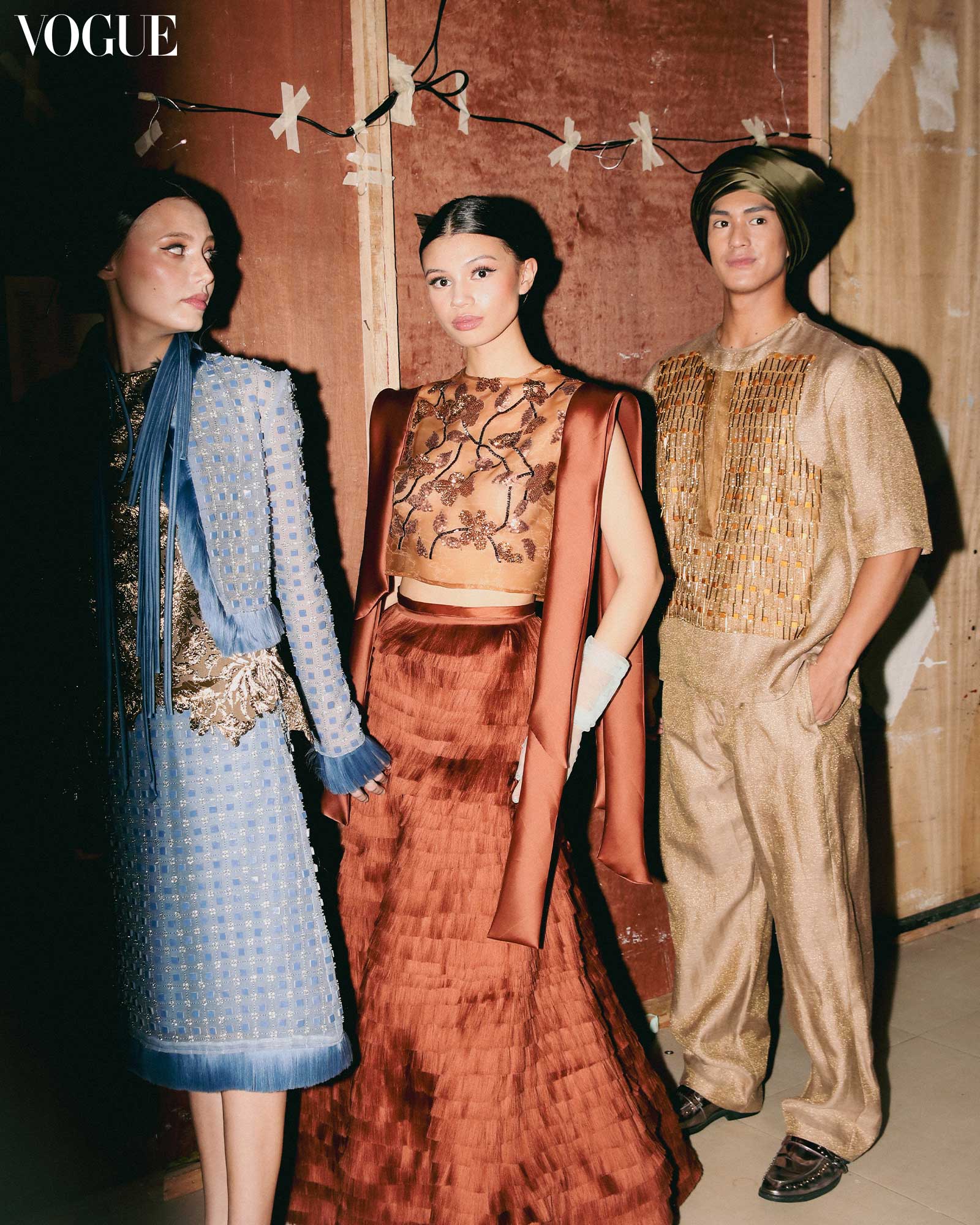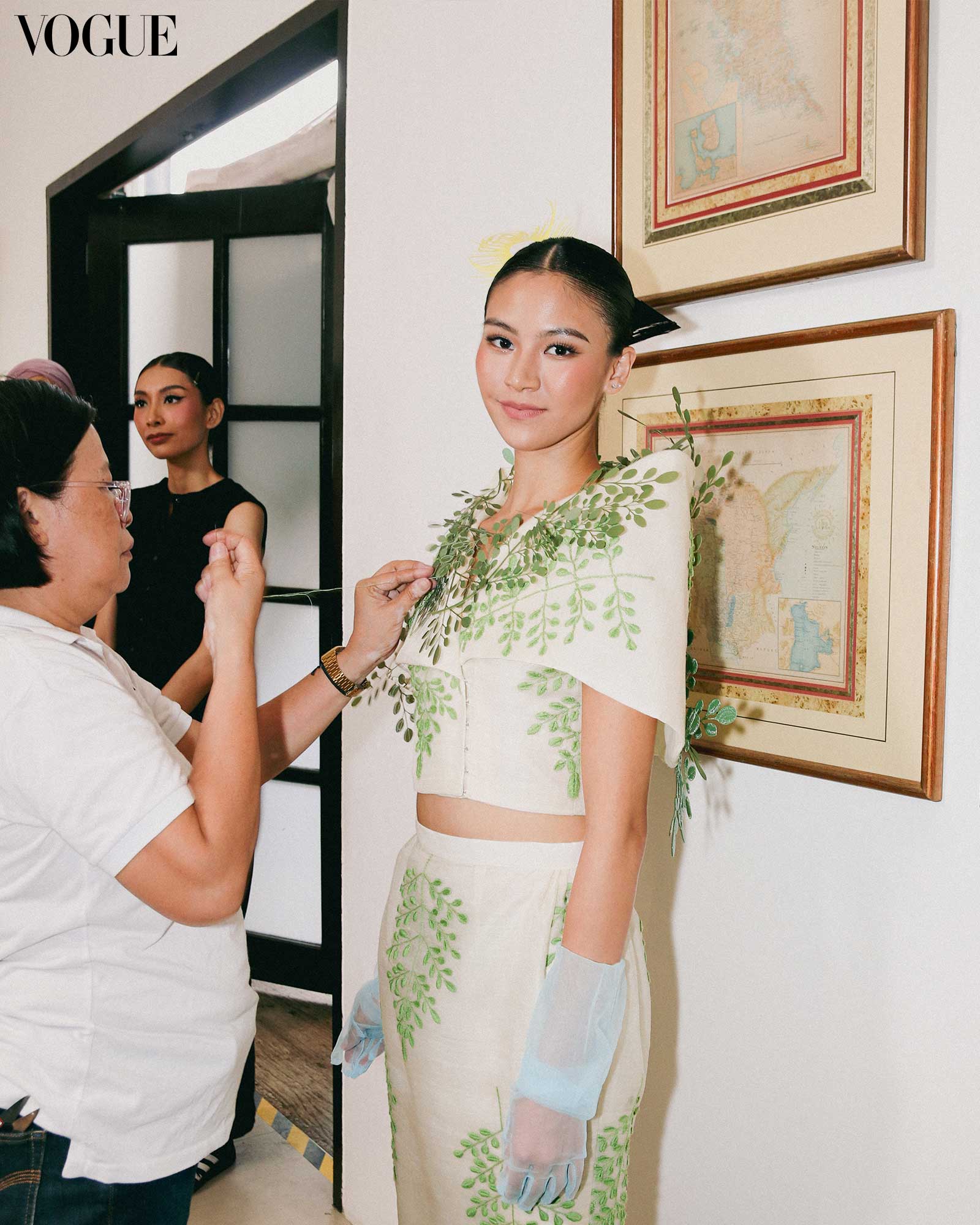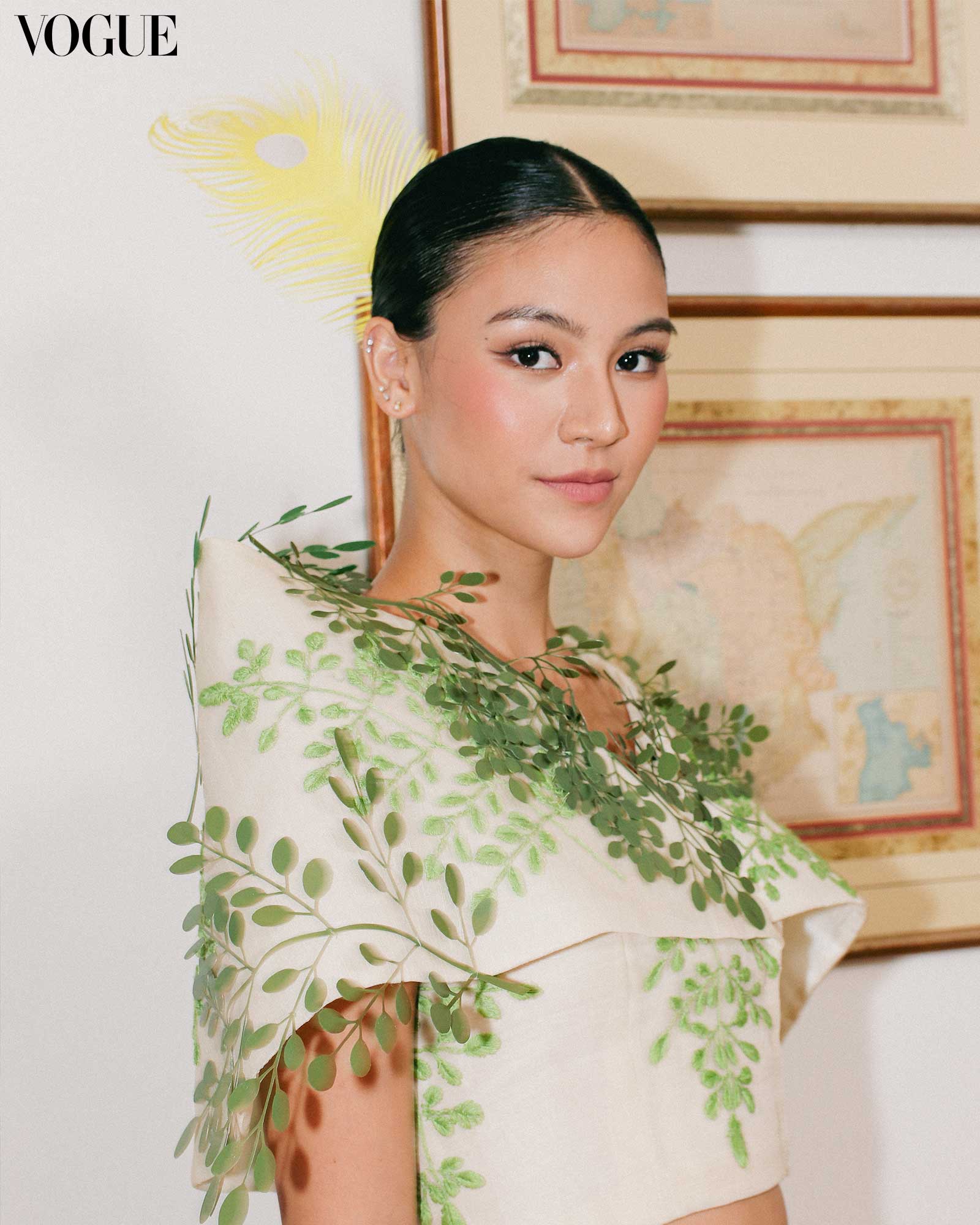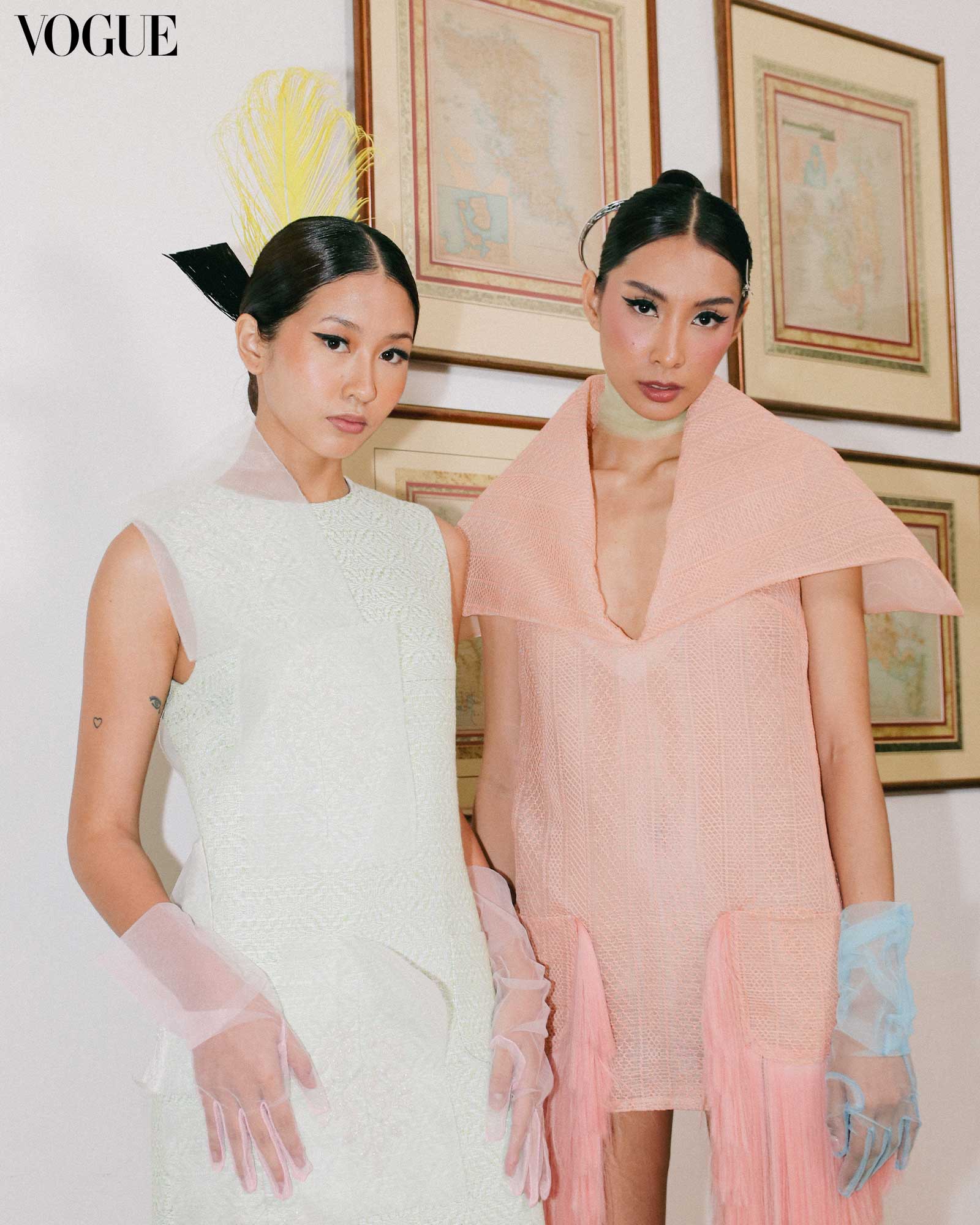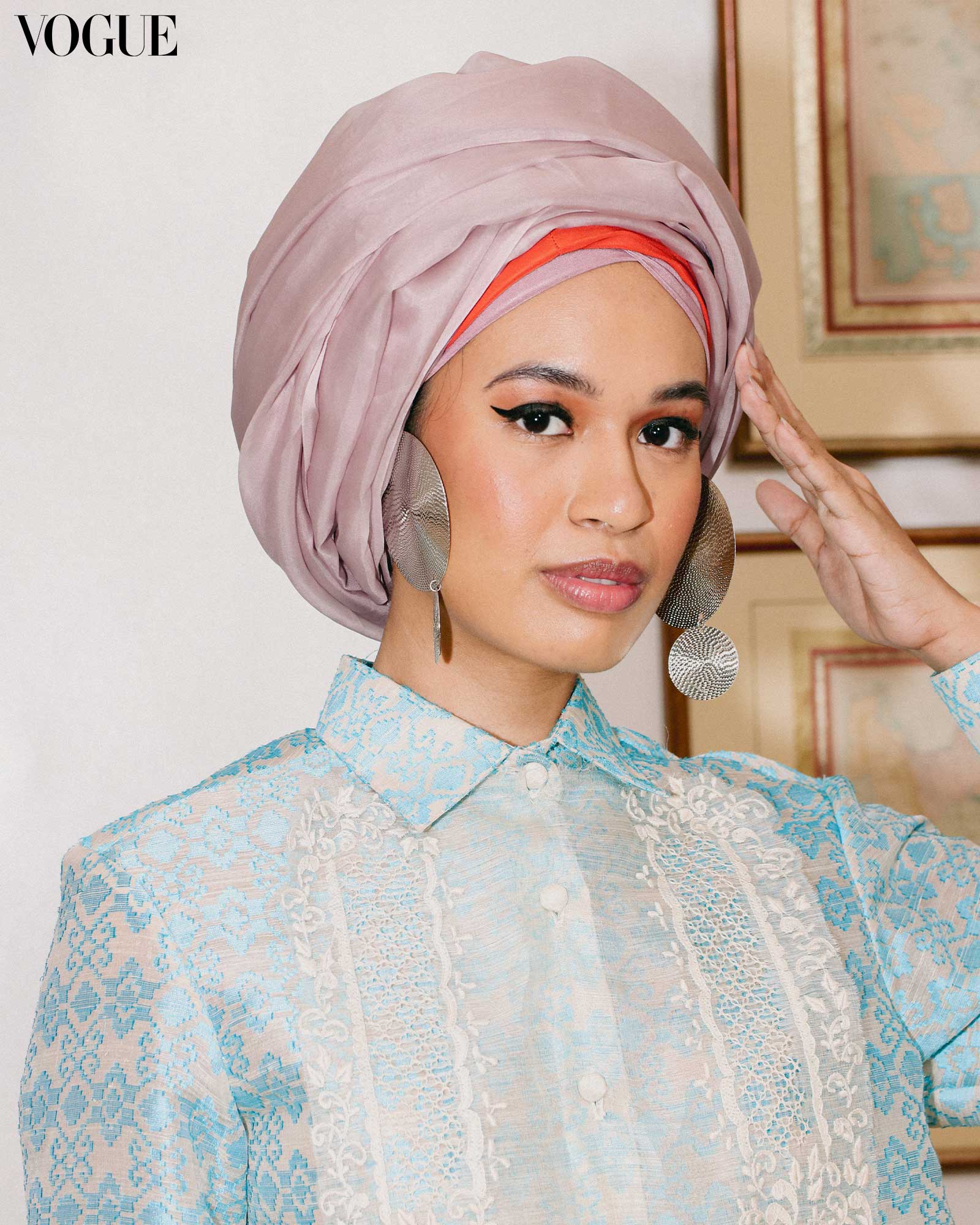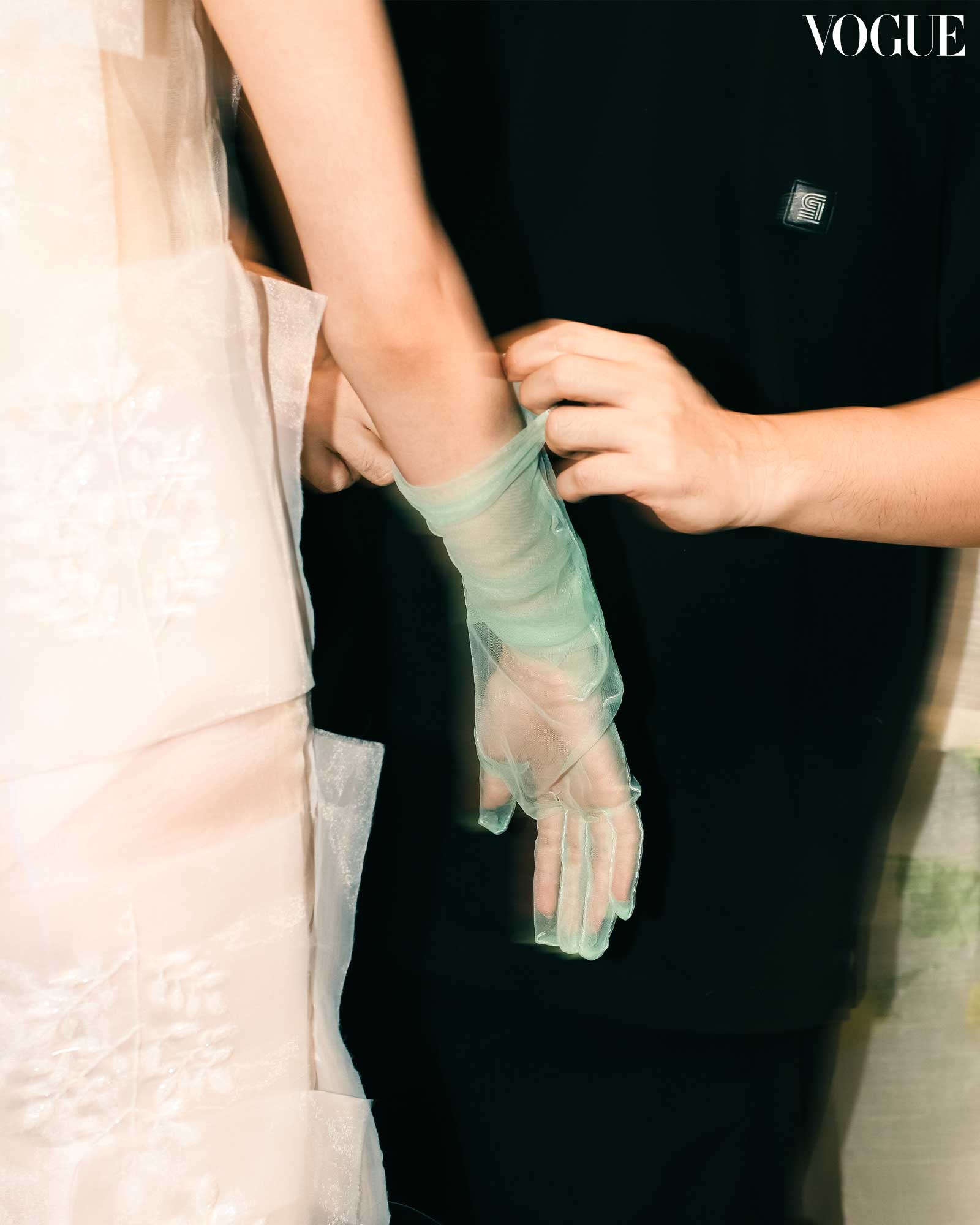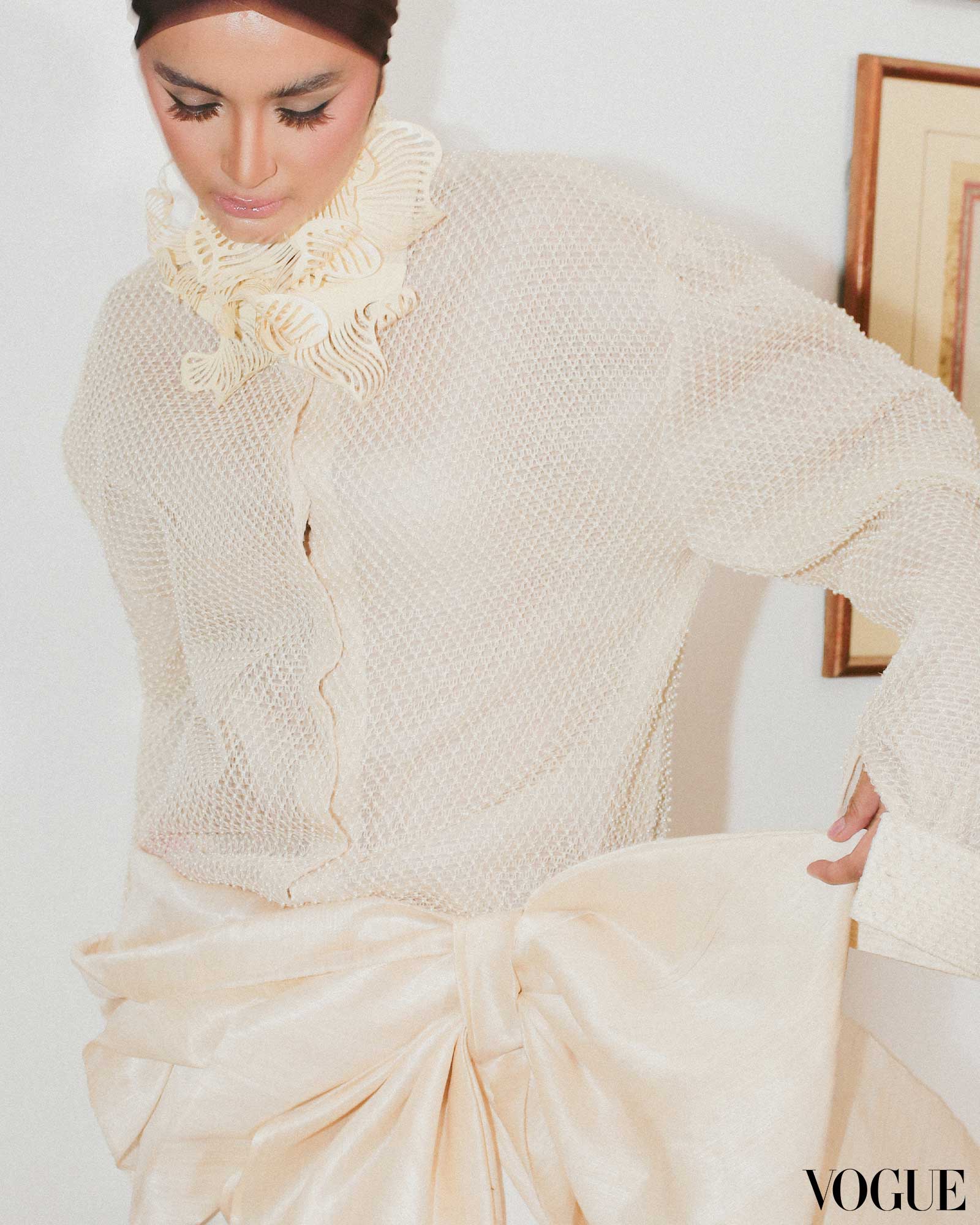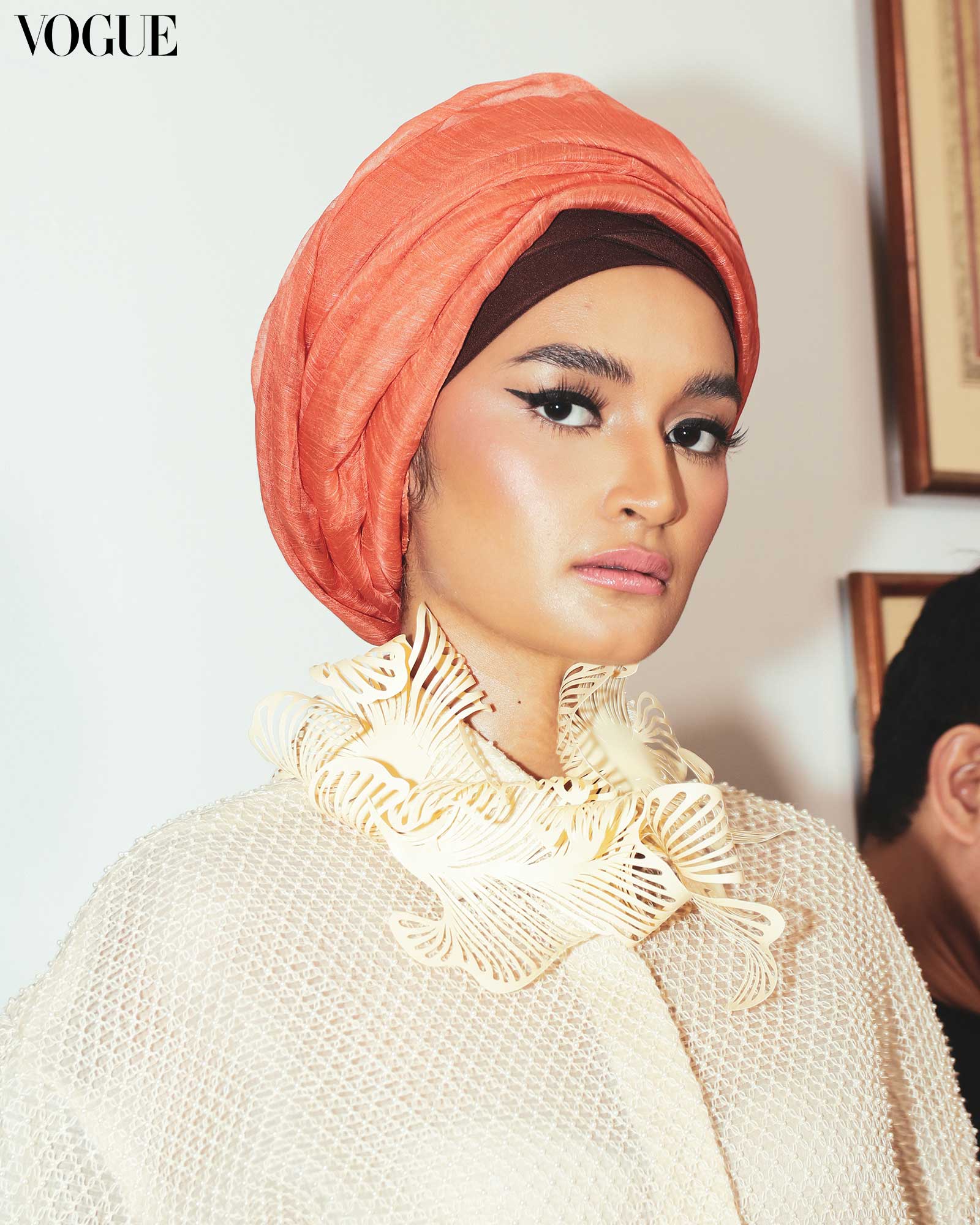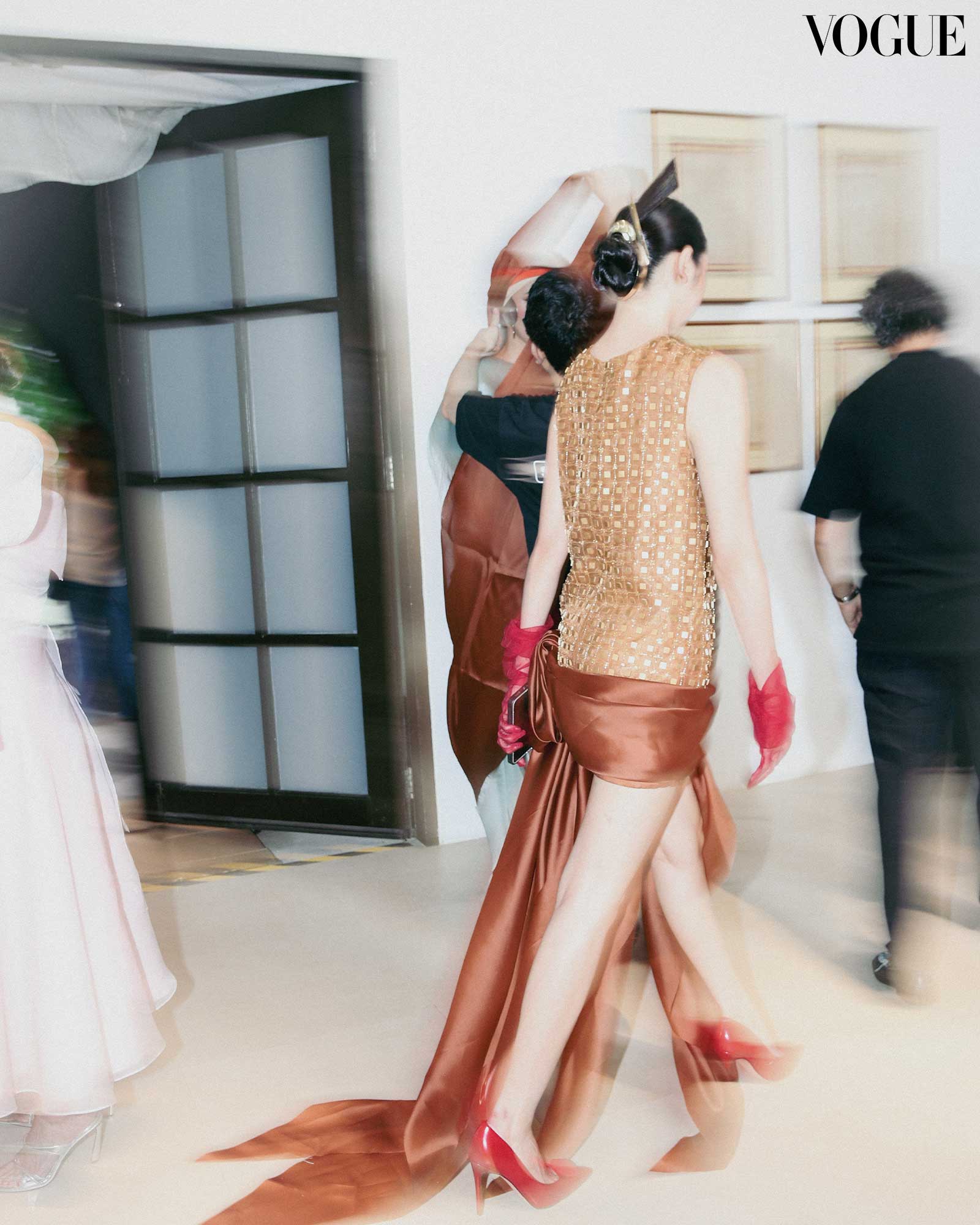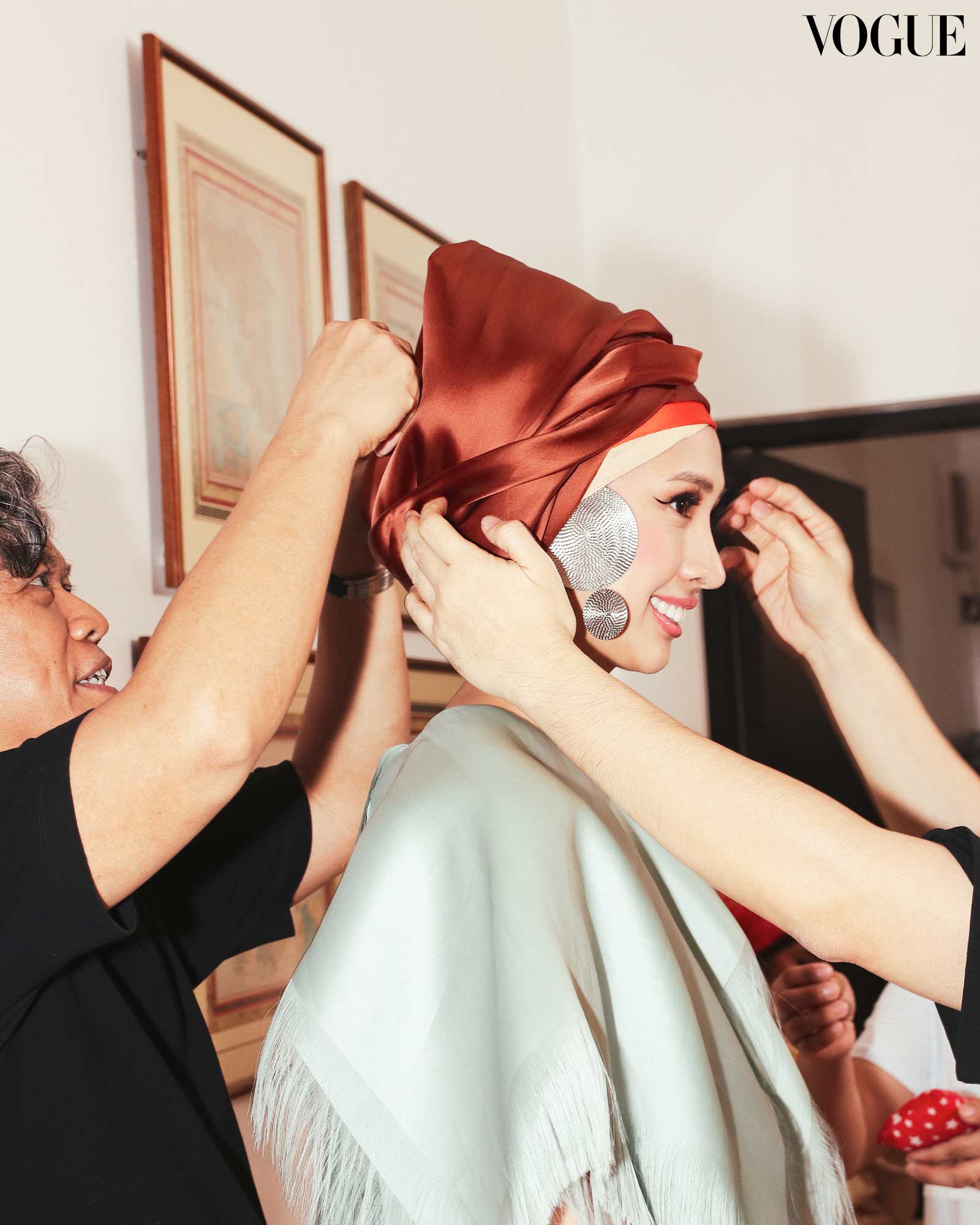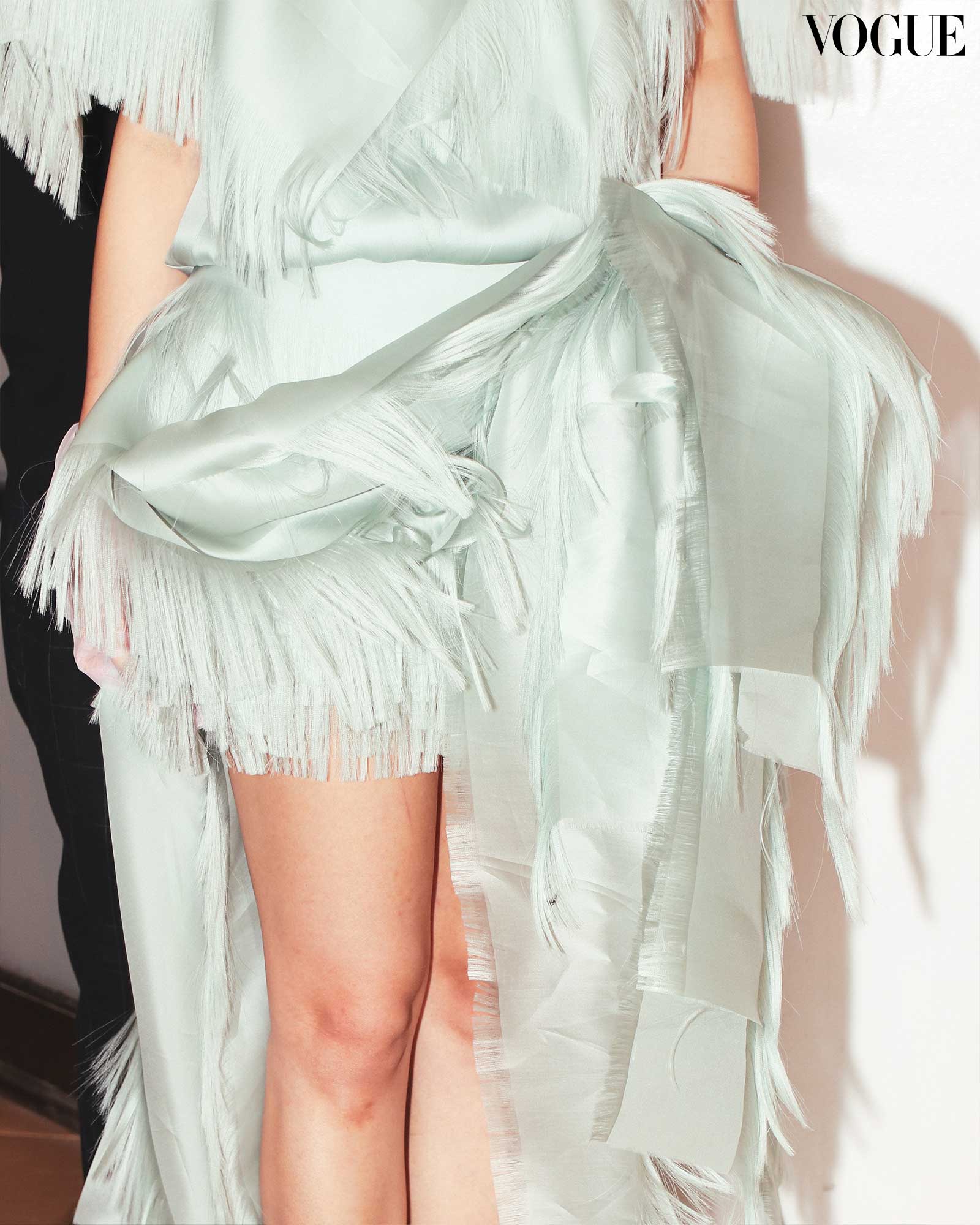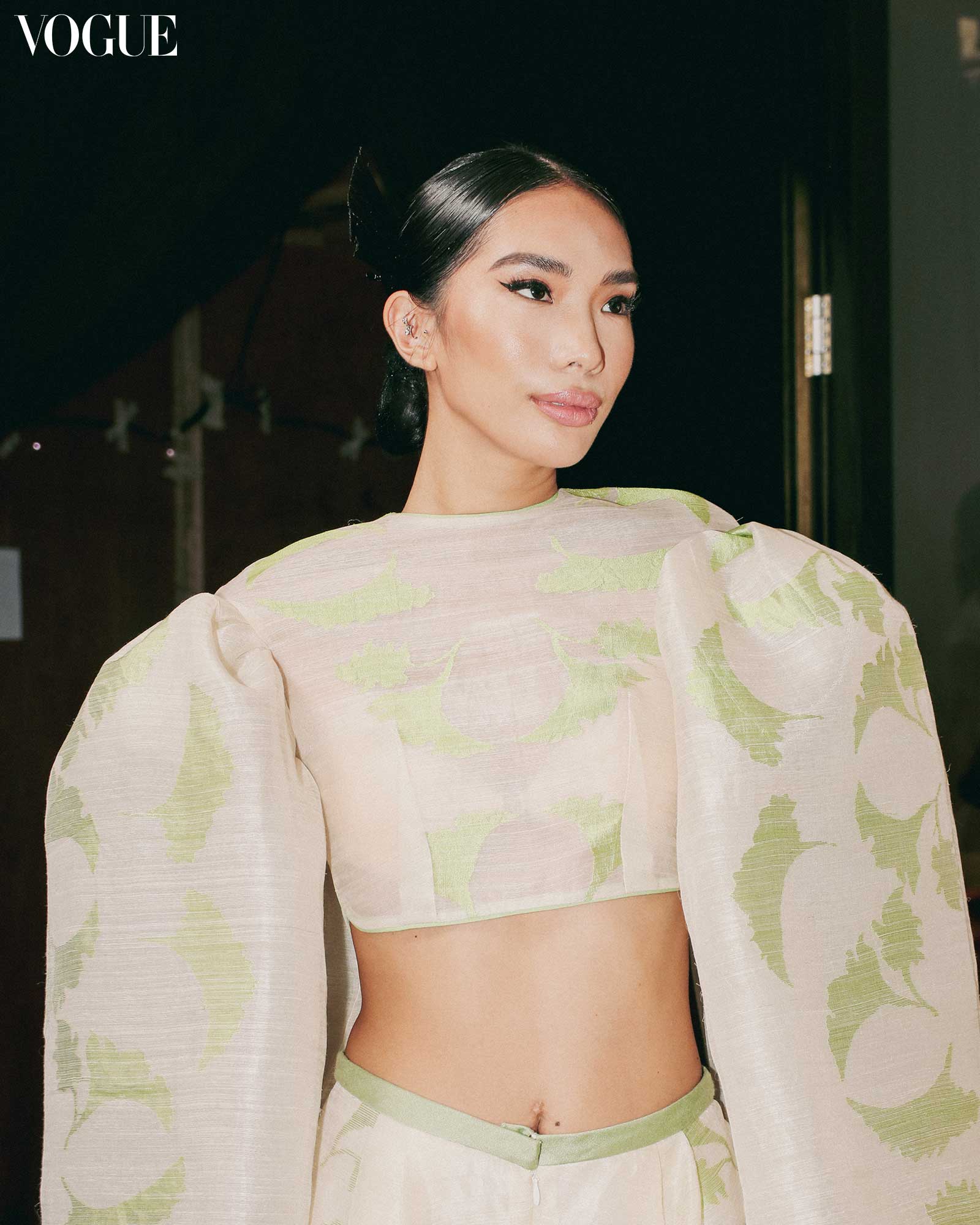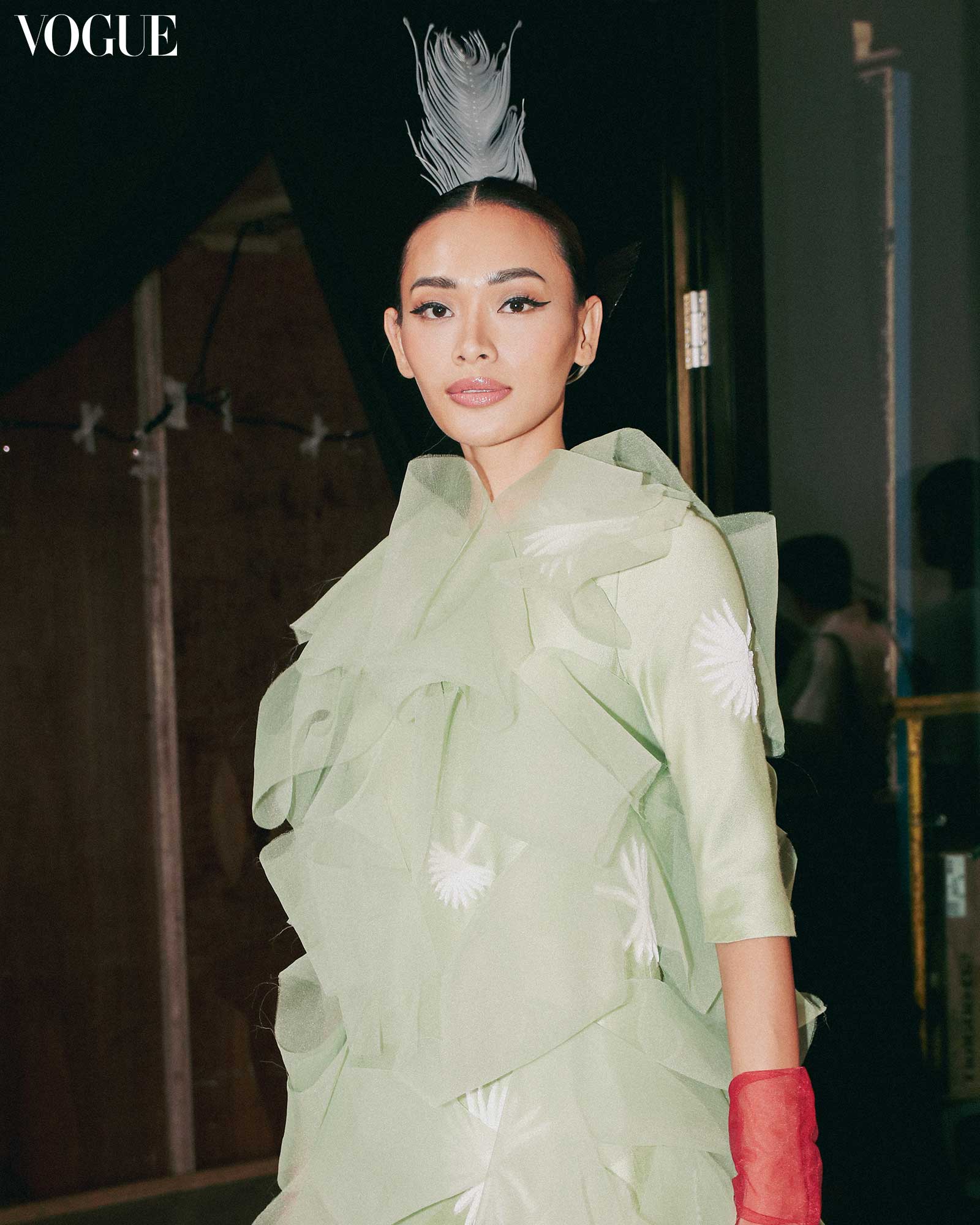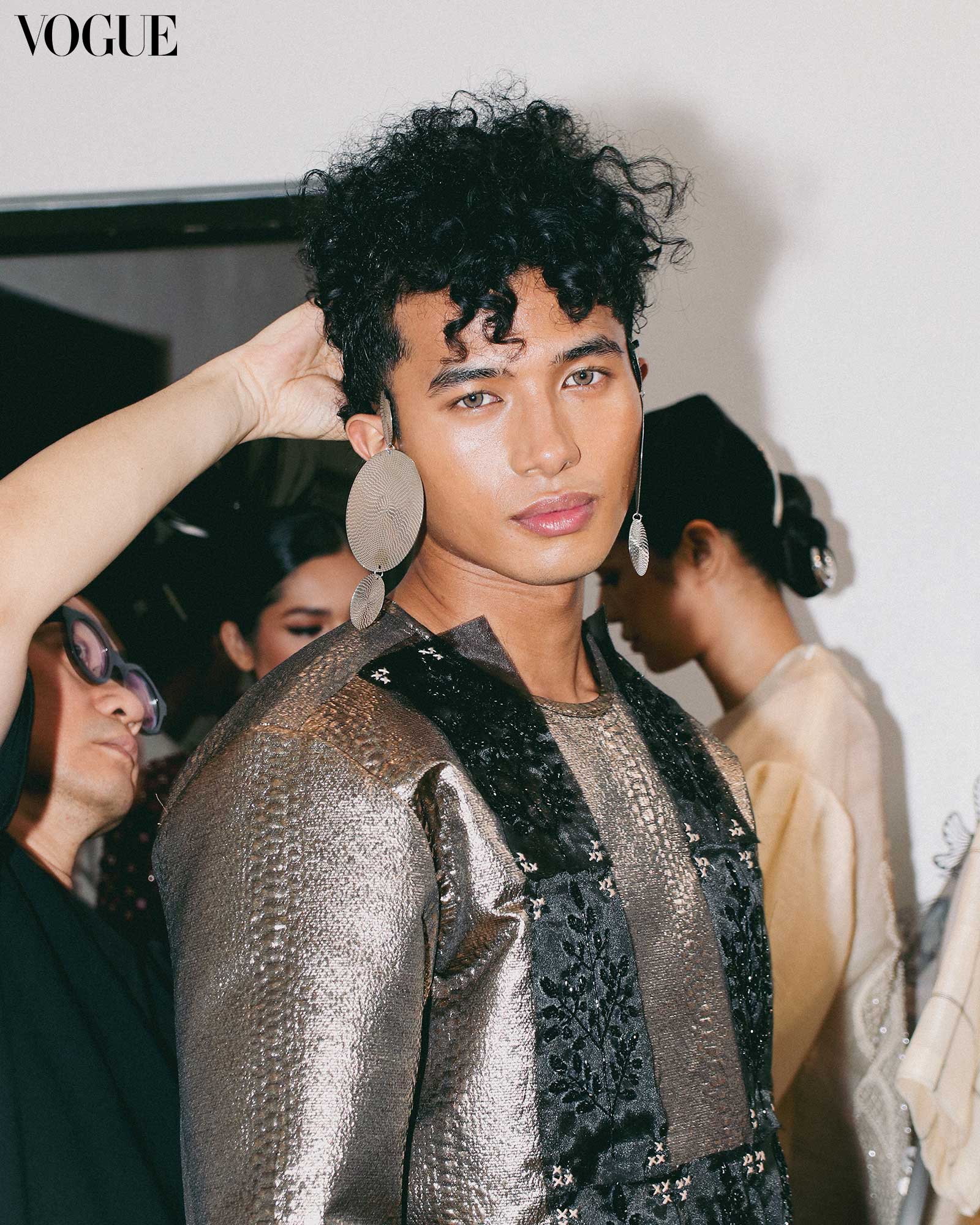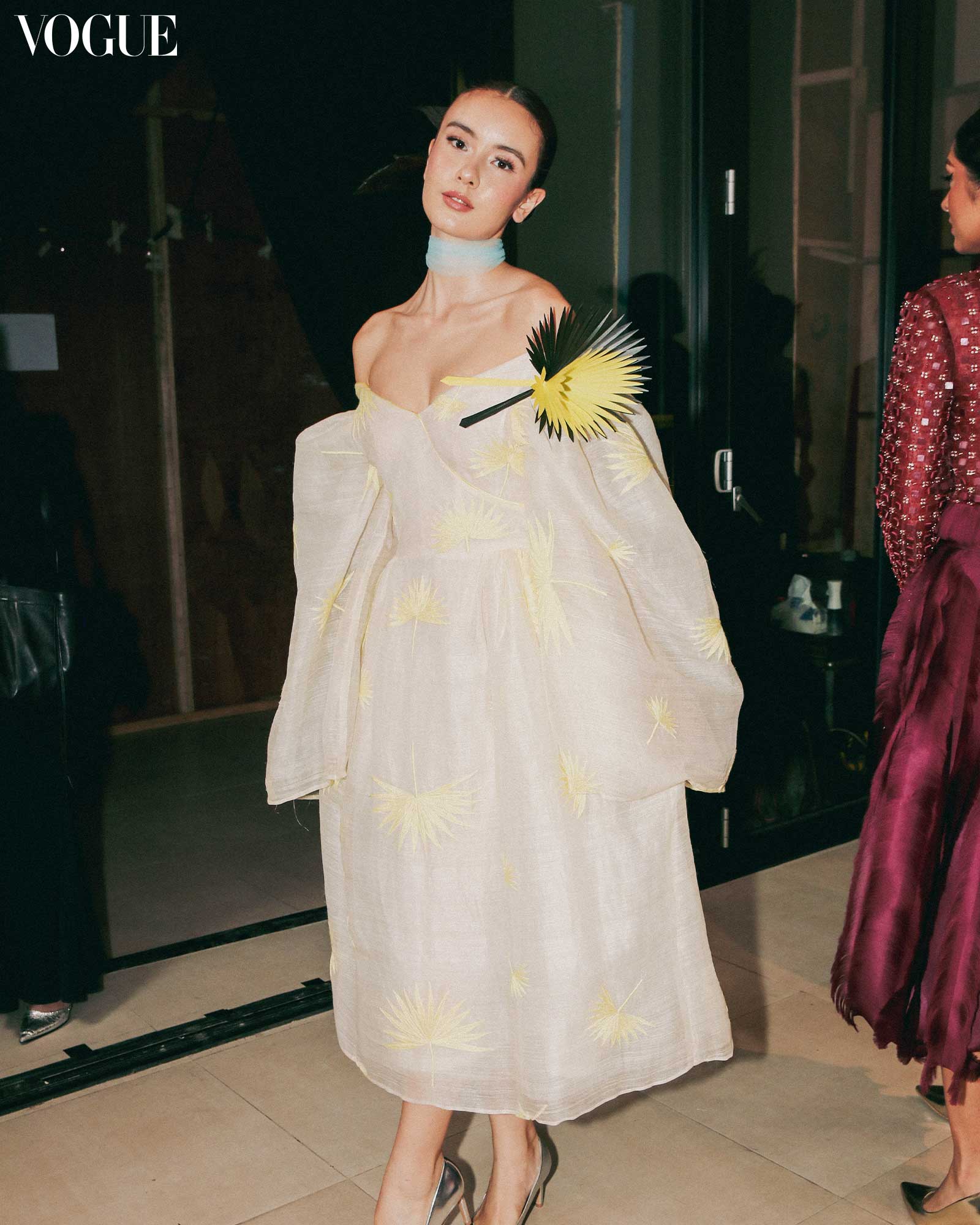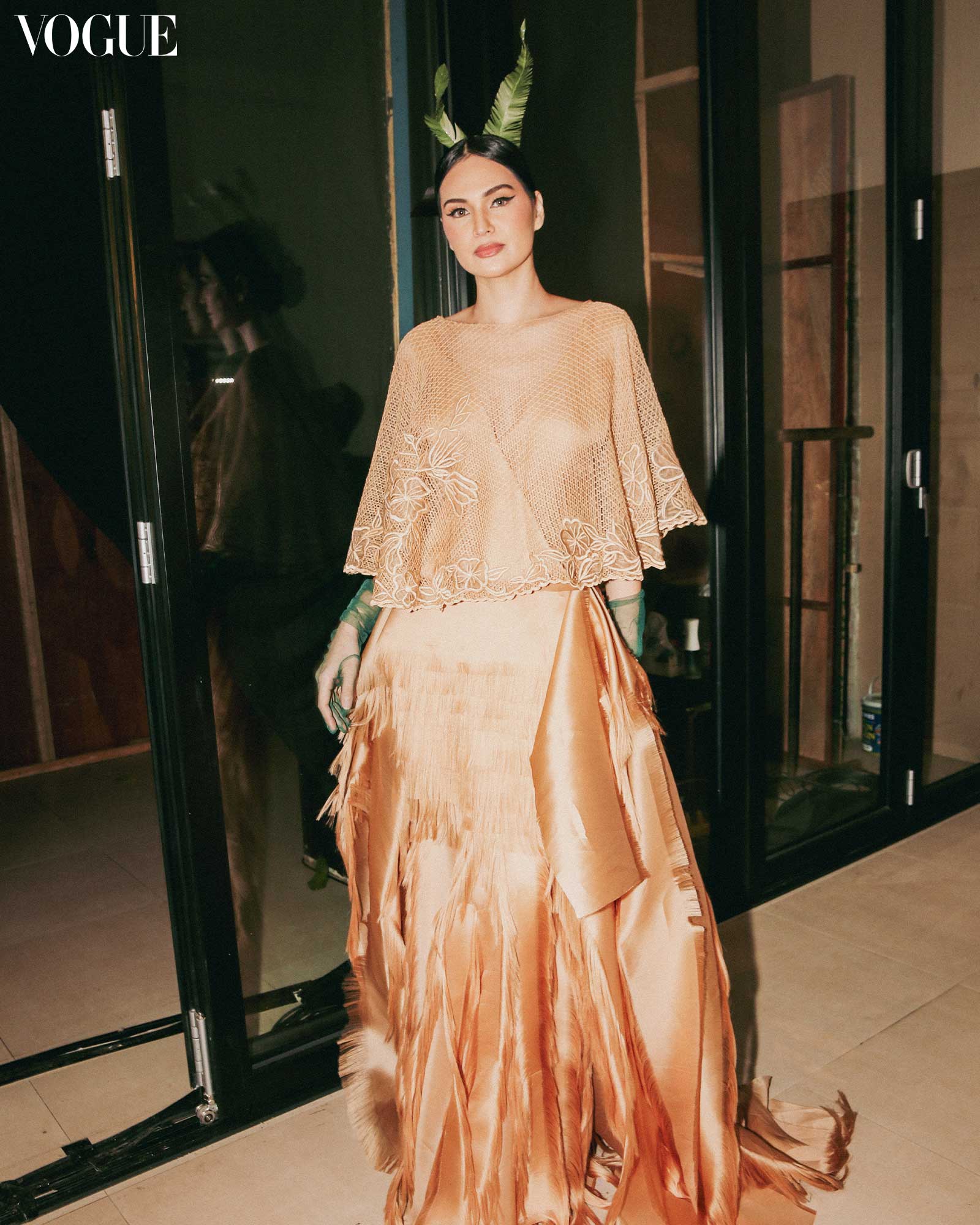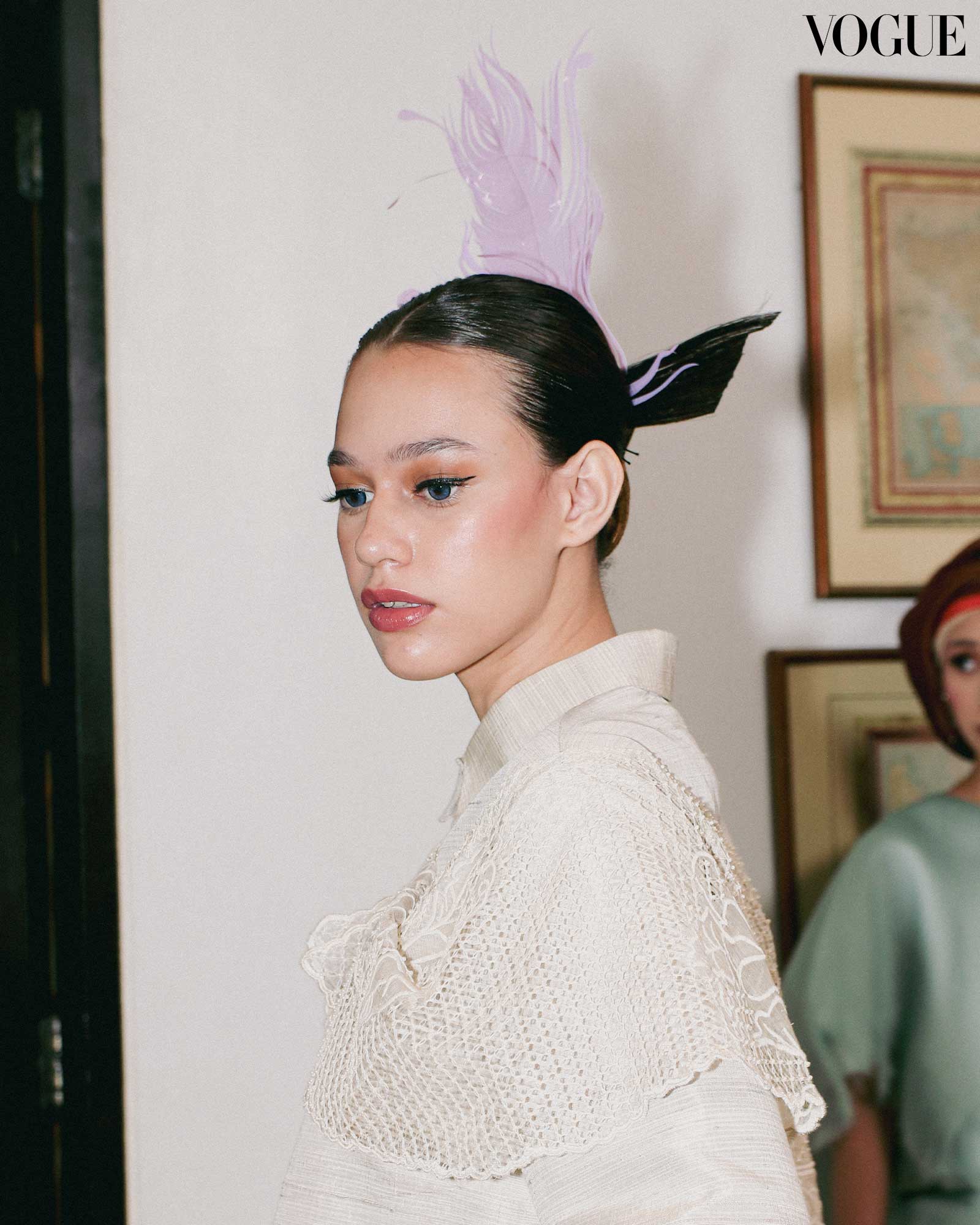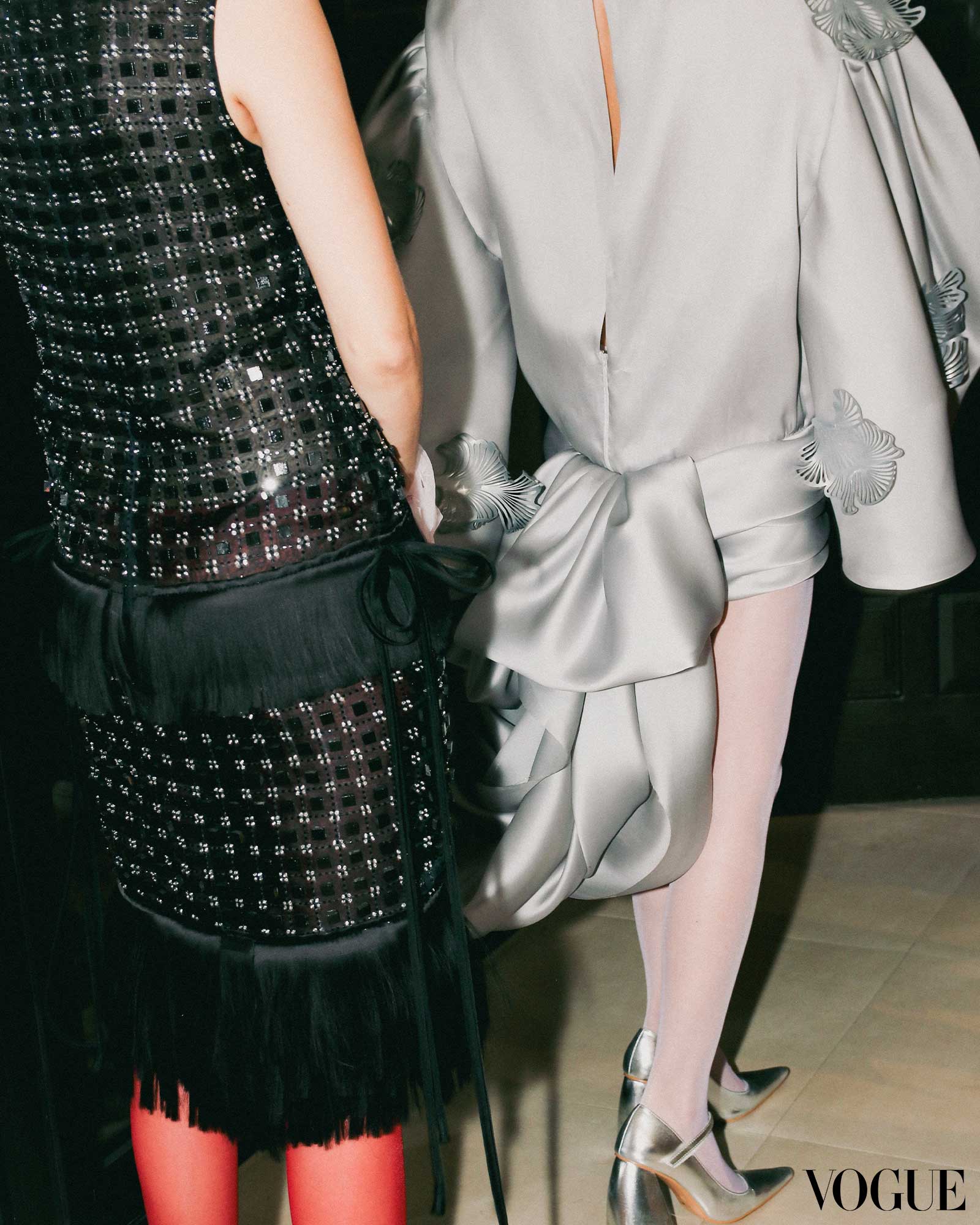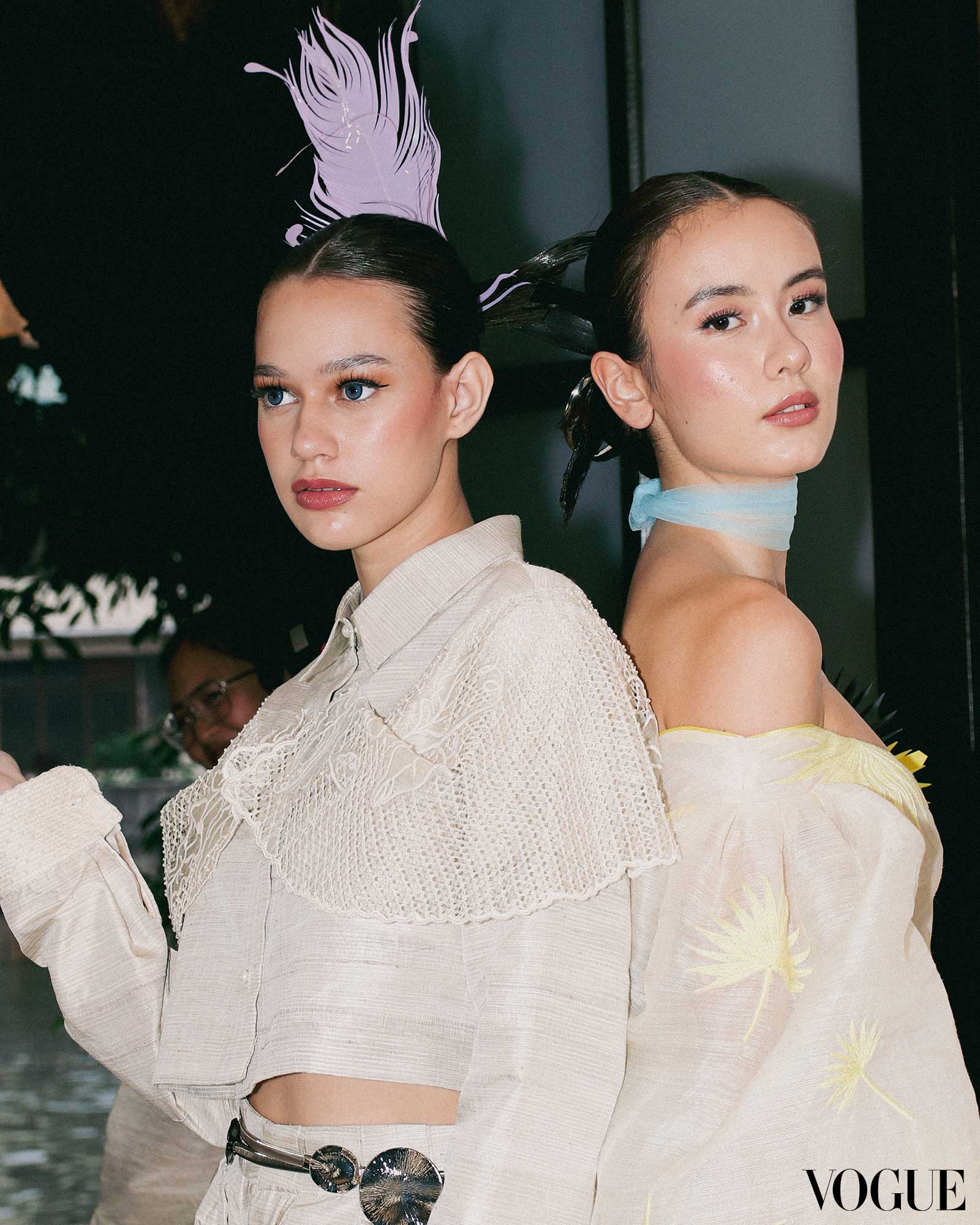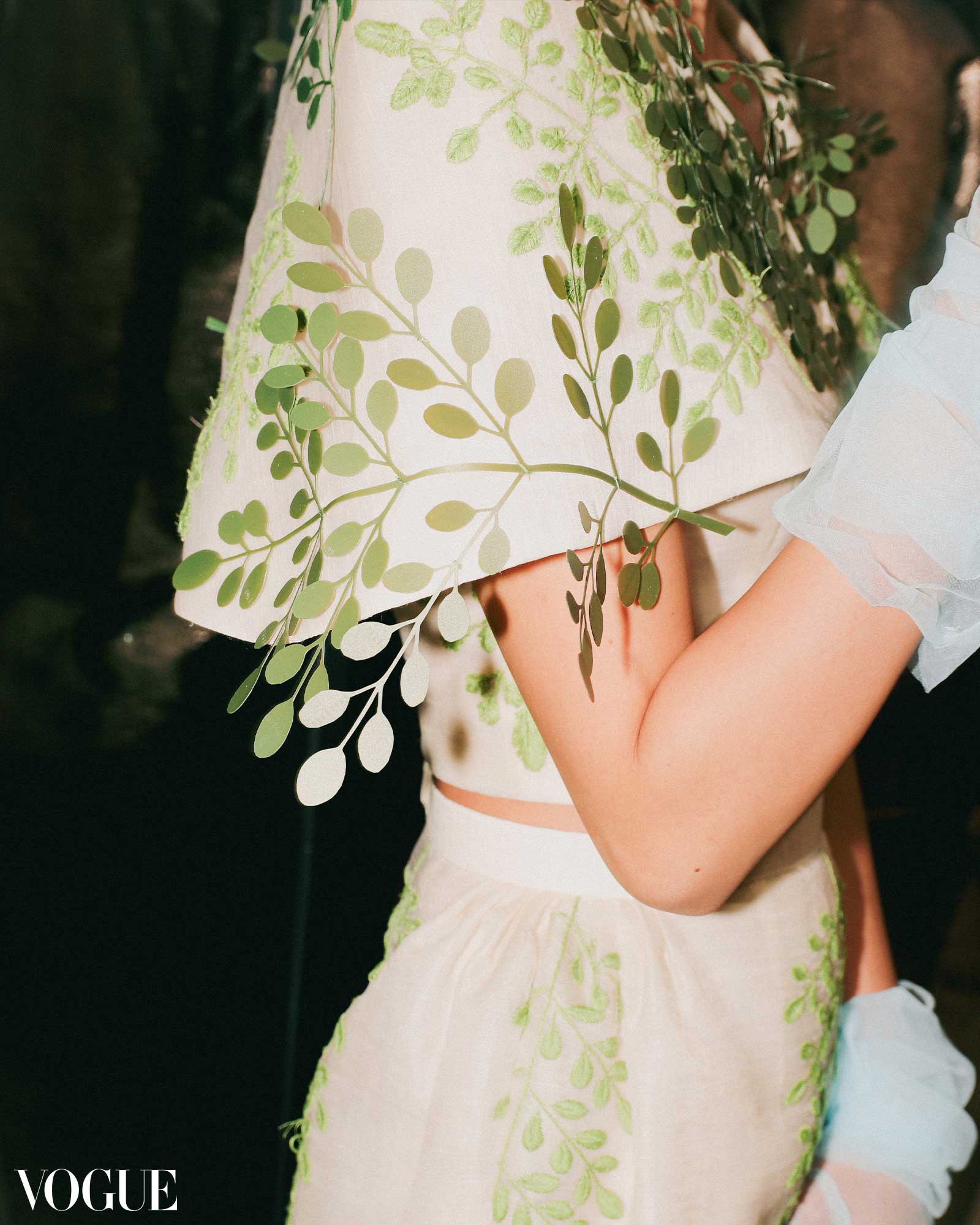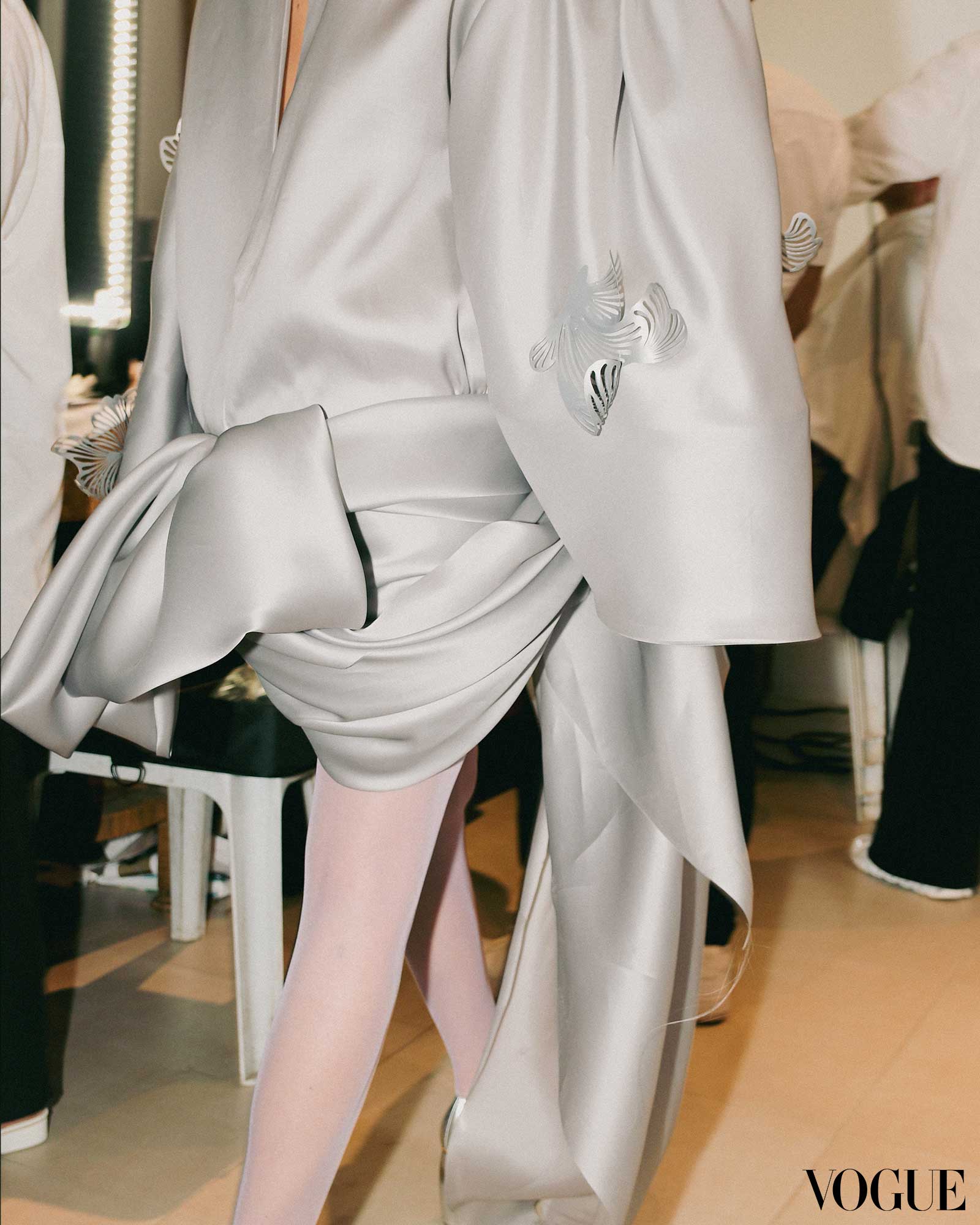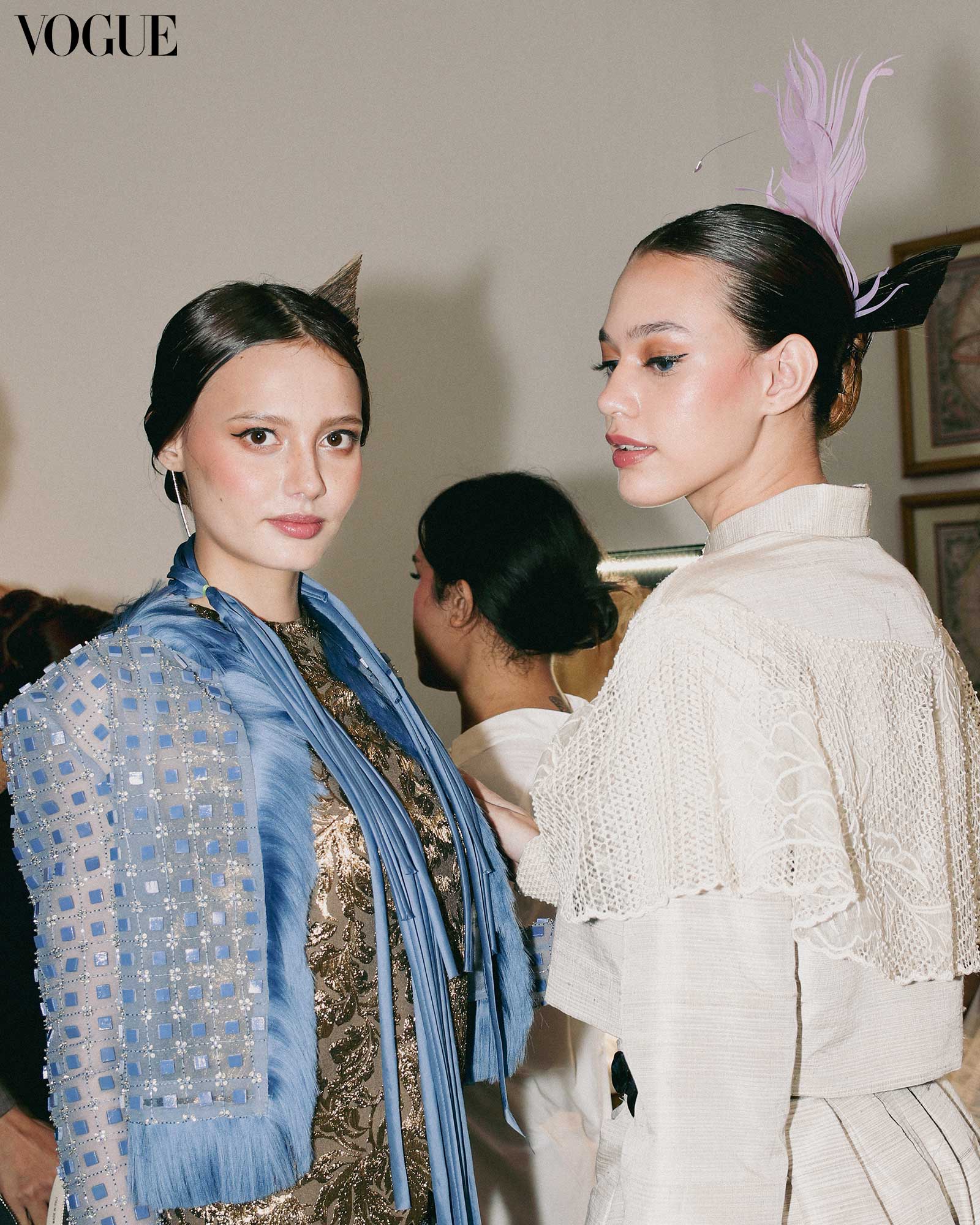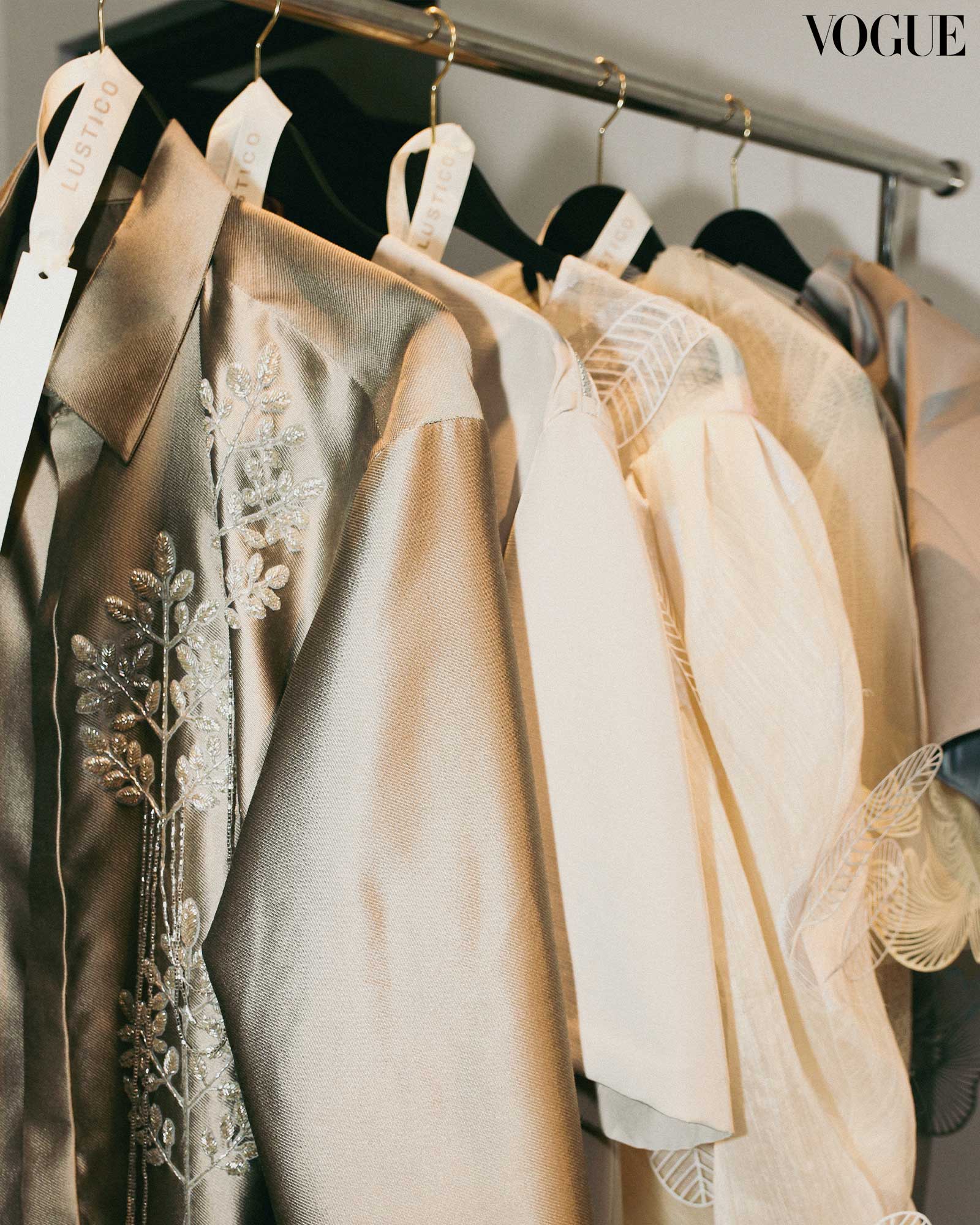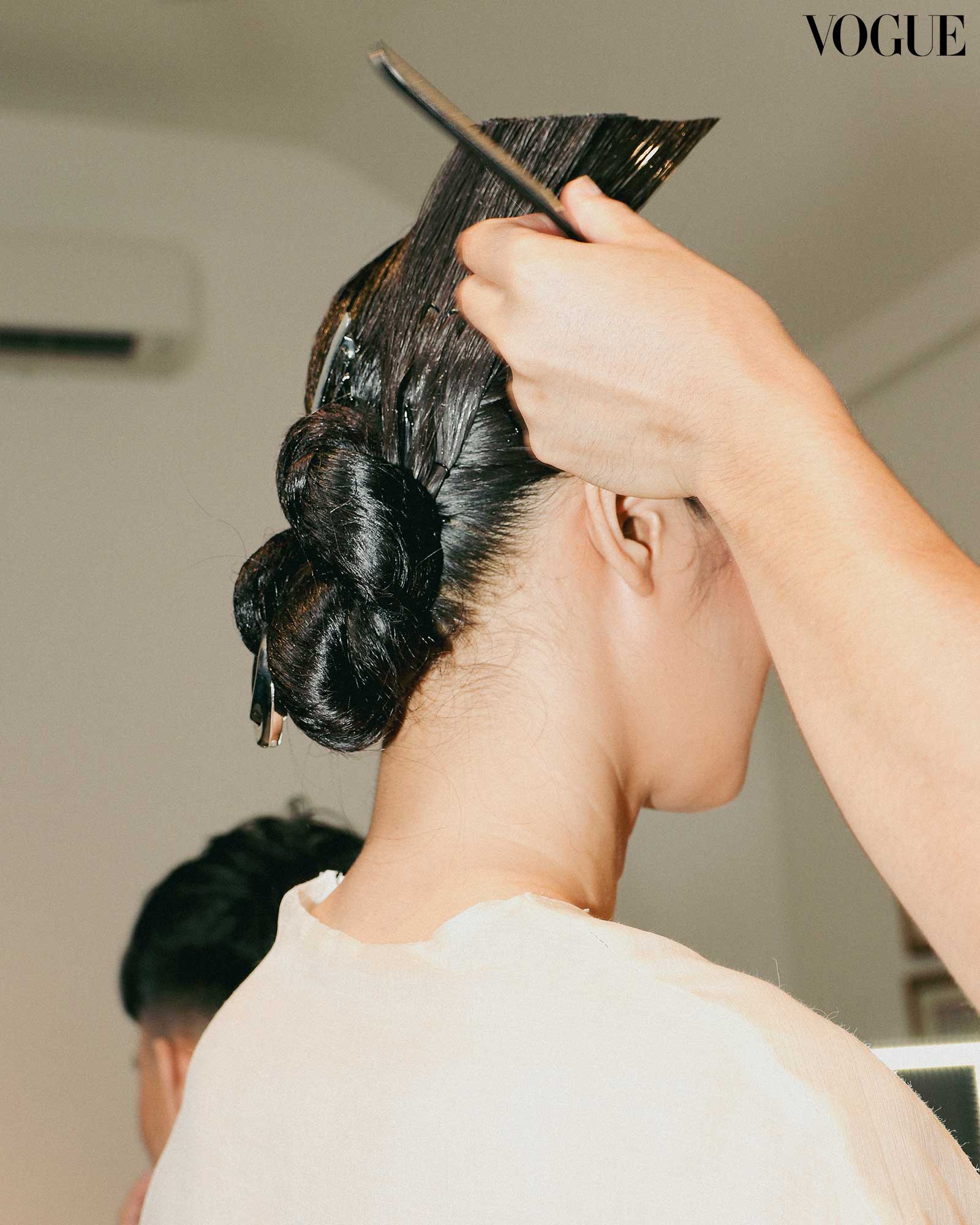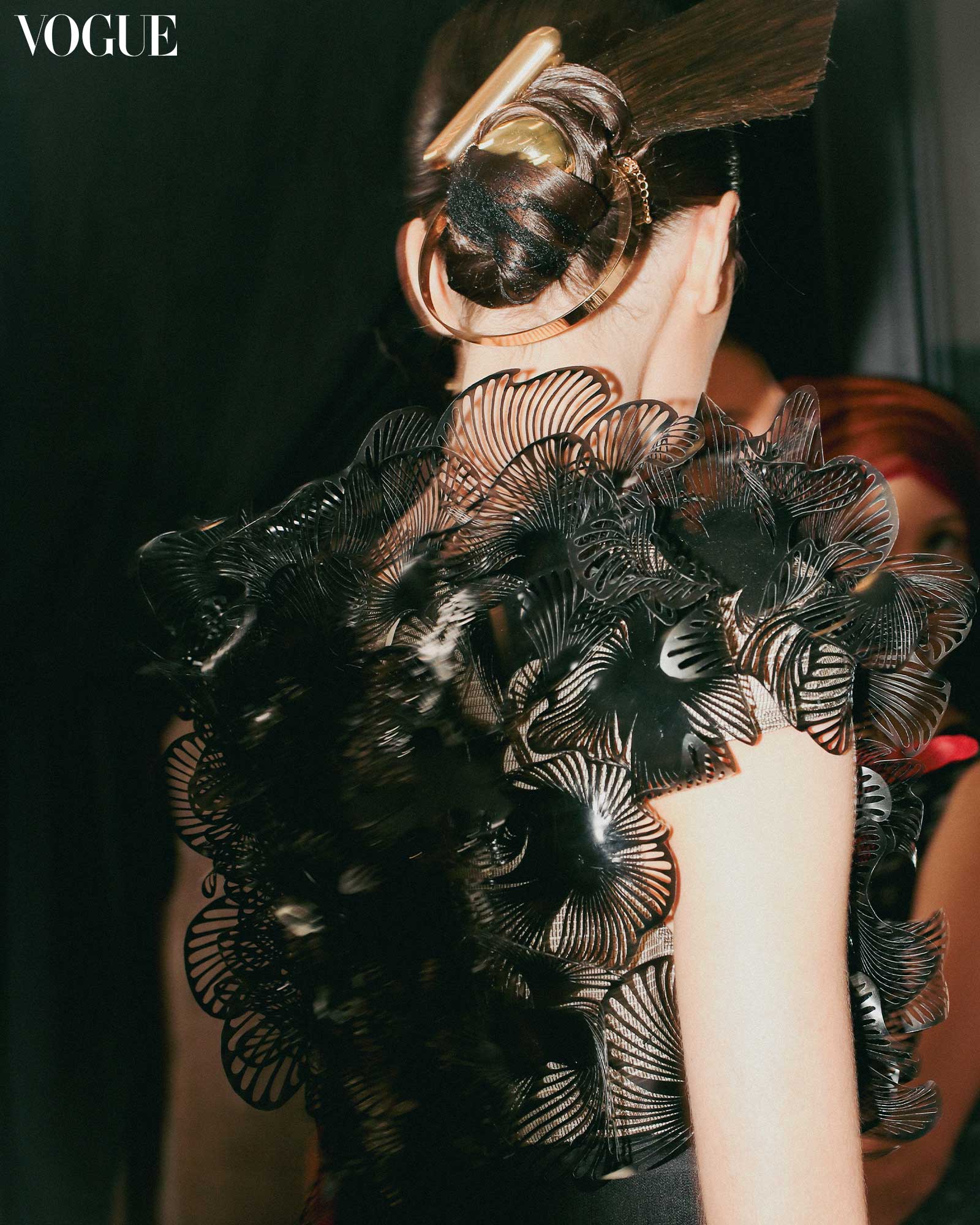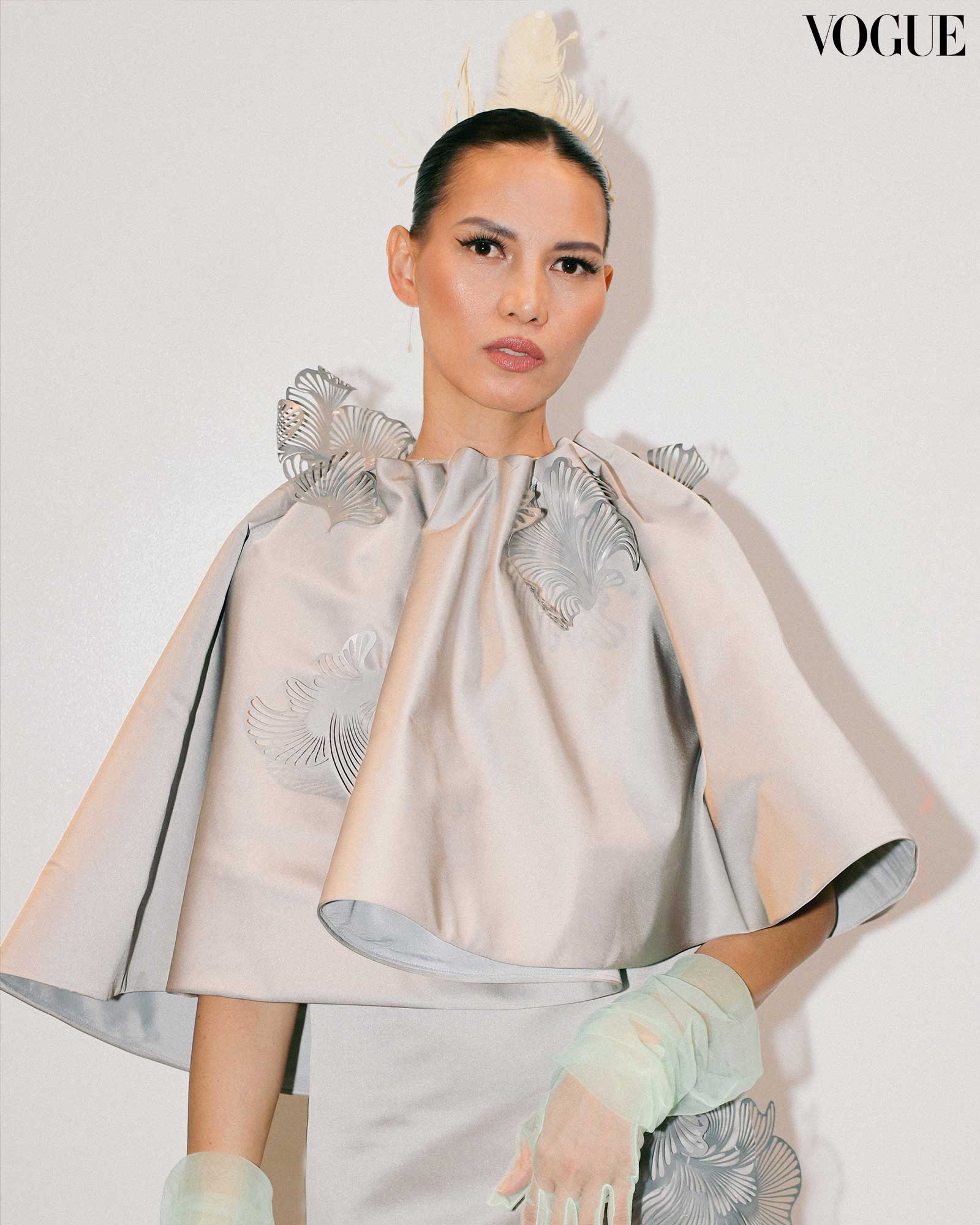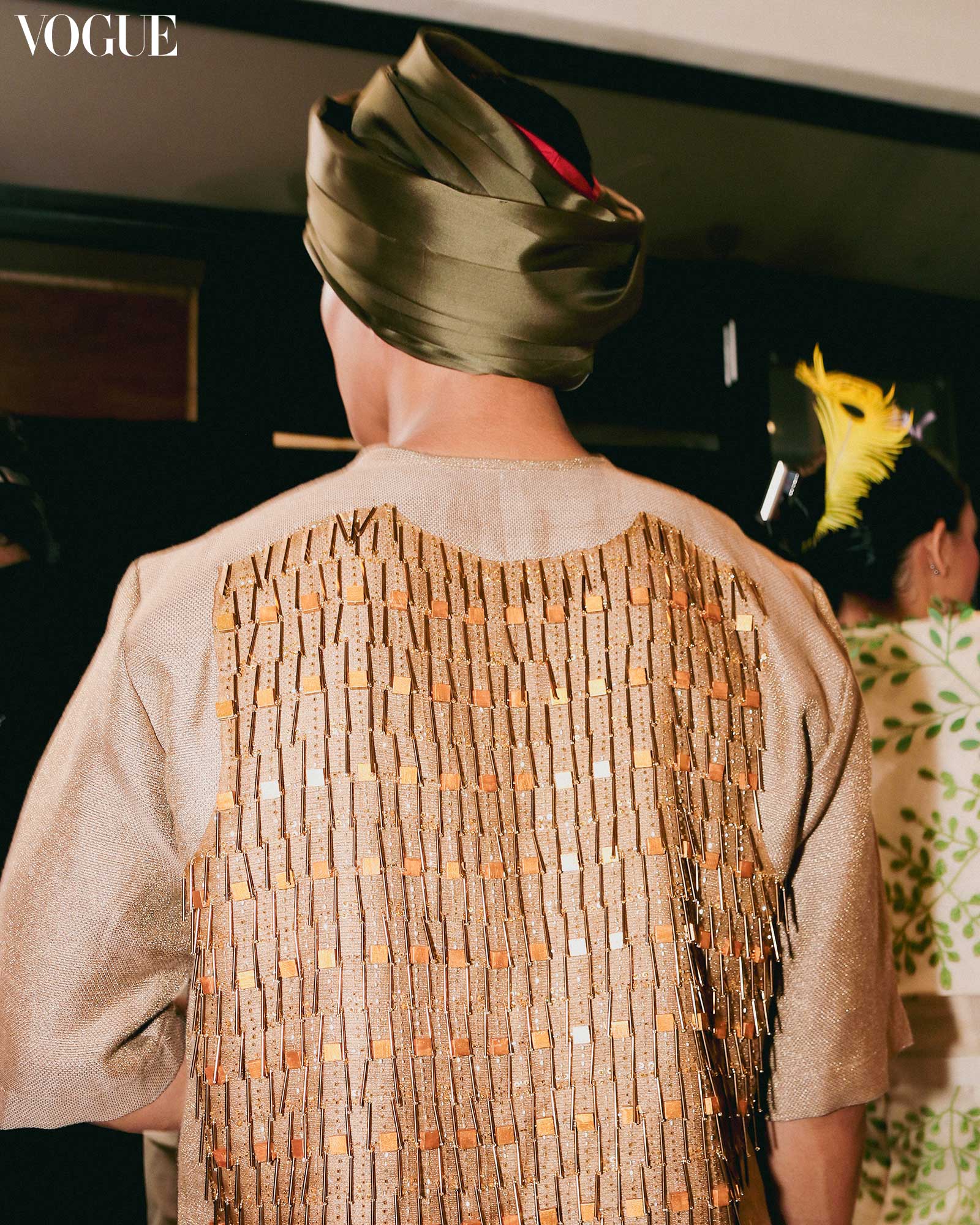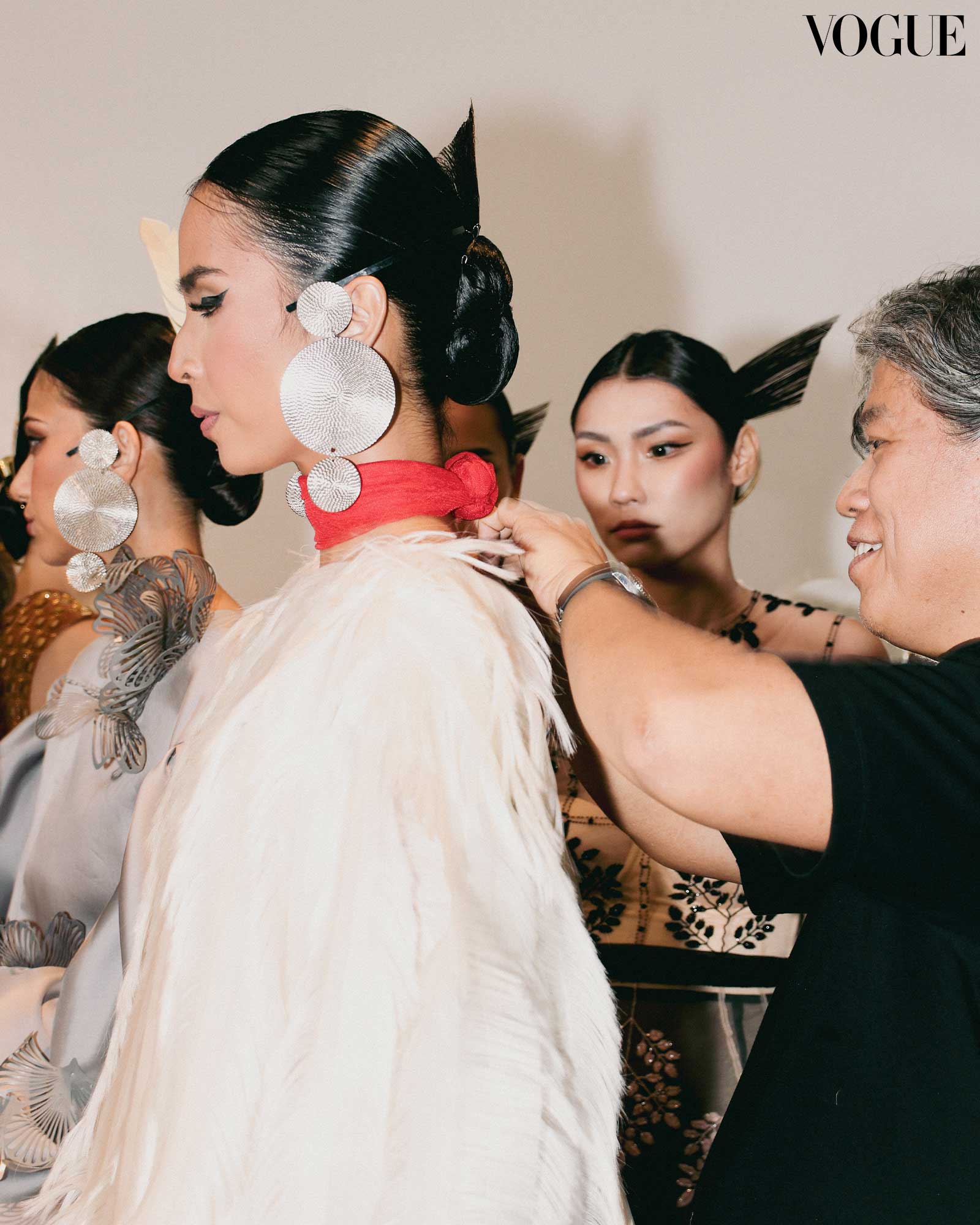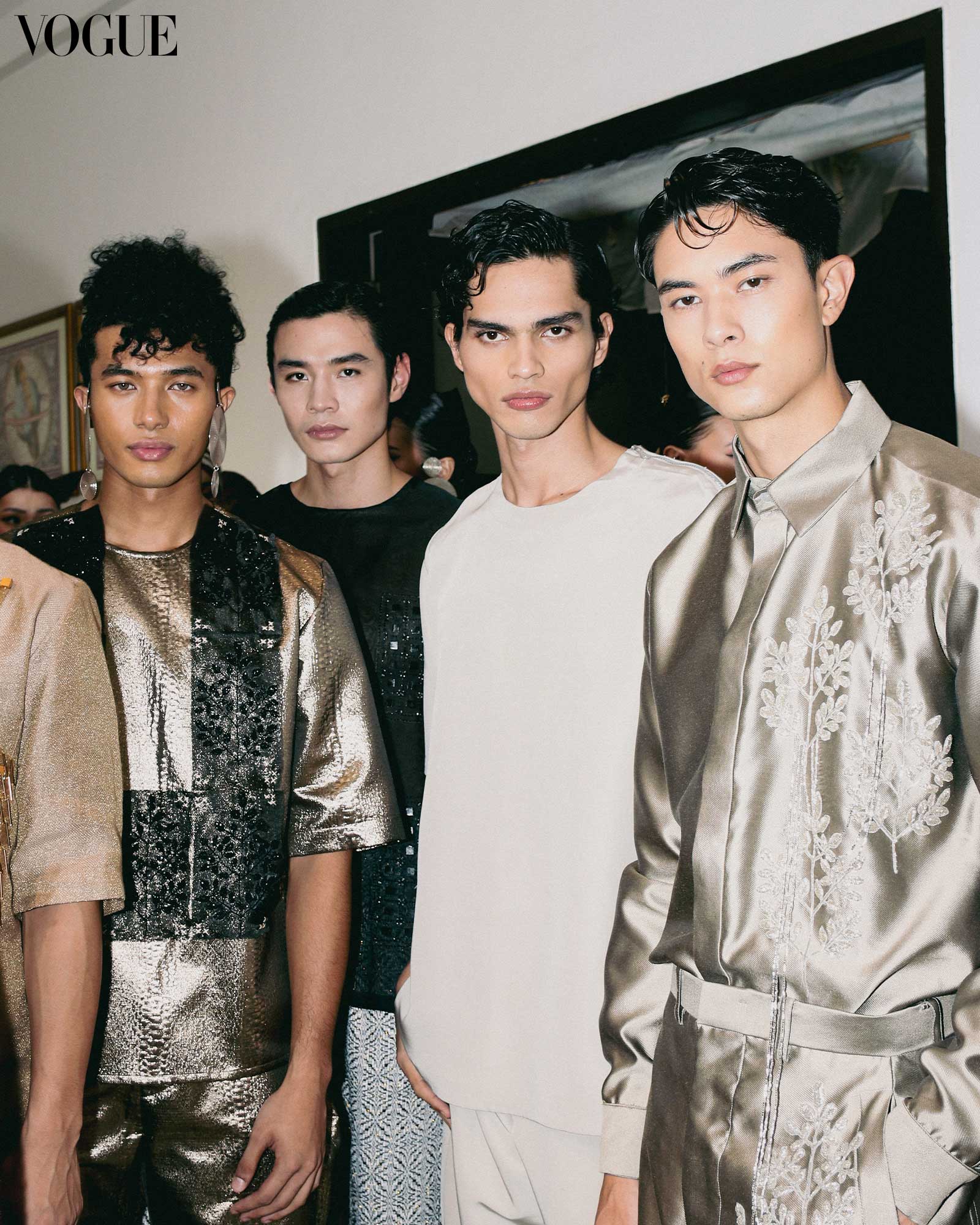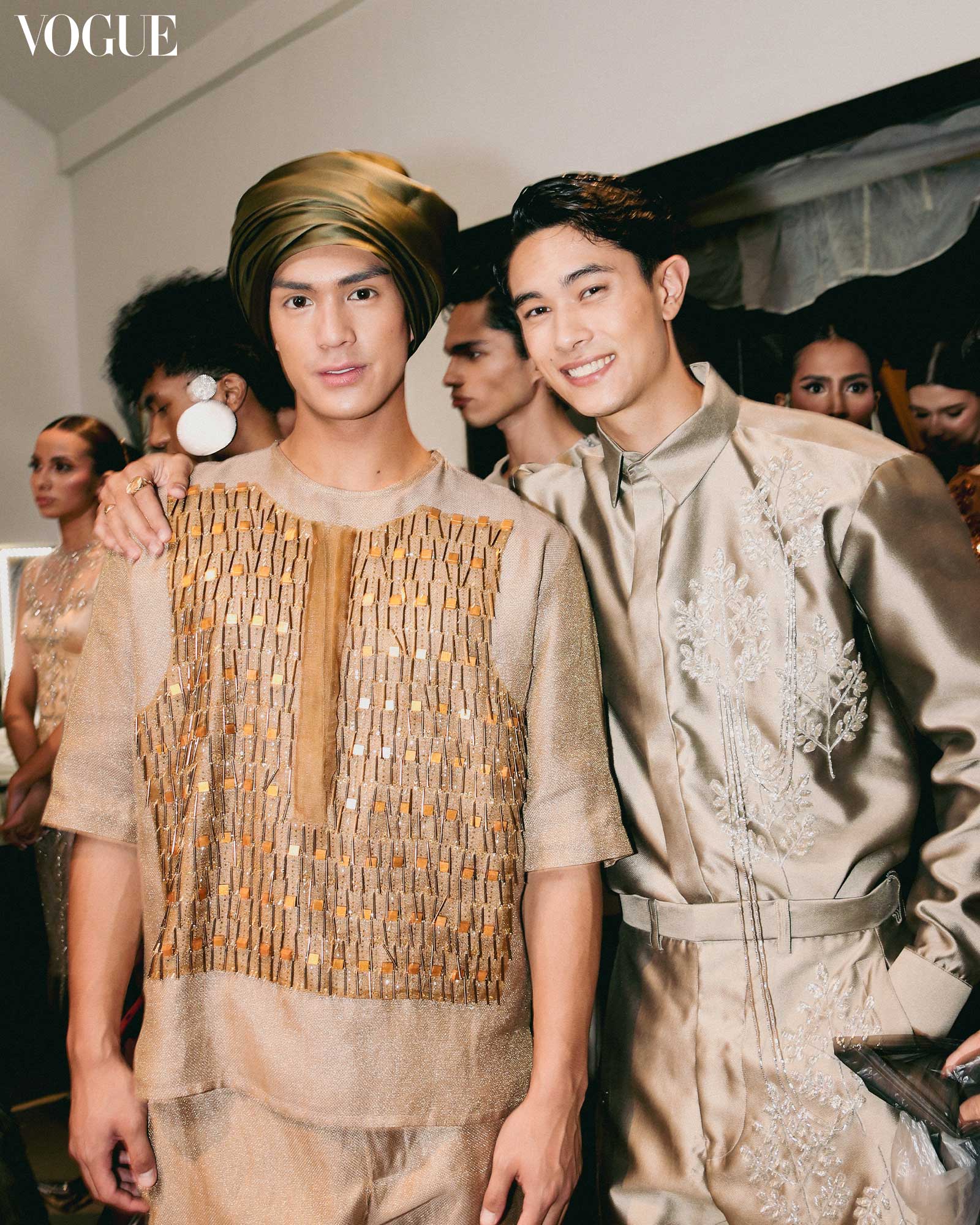Dennis Lustico’s “Pamana” was a highly textural affair centered around distinctly Filipino touchpoints. Photographed by Tinkerbell Poblete
Vogue gets an exclusive behind-the-scenes look at Dennis Lustico’s “Pamana” fashion show.
There was a chance that the show would be postponed a second time. On October third, just as Dennis Lustico’s team was putting the finishing touches on the part-indoor, part-outdoor runway, it began to pour. “It’s insane,” said digital associate editor Chelsea Sarabia from backstage, exactly two hours before the show. Thunder rumbled, heavy raindrops fell on the pavement, and mud had begun to splatter on the catwalk. The team fell into a panic. But as the adage goes, the show must go on.
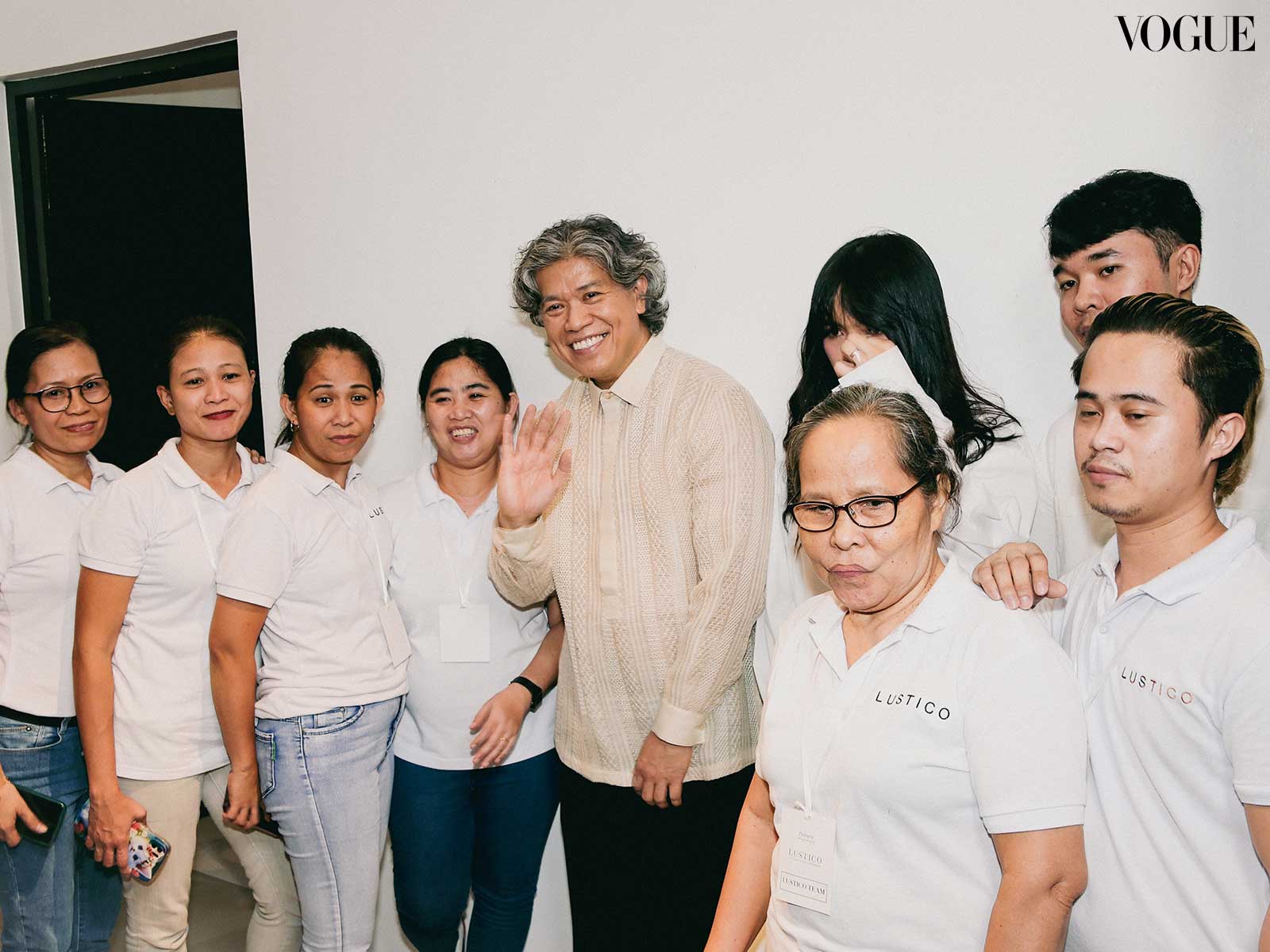
And it did, thanks to clouds that dissipated as quickly as they formed. Lustico’s show “Pamana” was initially set for September 5th, but was canceled in the wake of severe weather conditions that later developed into a super typhoon. It turns out, Dennis needed more time anyway. “That one month period actually gave me time to improve on so many looks,” he shares exclusively with Vogue. Those extra weeks enabled Lustico’s team to experiment with wooden chips, tiny squares that they “had to lacquer each and every one to match the color that I have in mind.”
Those hand-cut, lacquered chips were featured on an ice blue crop jacket and amber shift dress, among many other ensembles. The highly textural affair also included plumage in rich mulberry and olive hues, calado embroidery in the form of a poncho, and dripping embellishments on menswear.
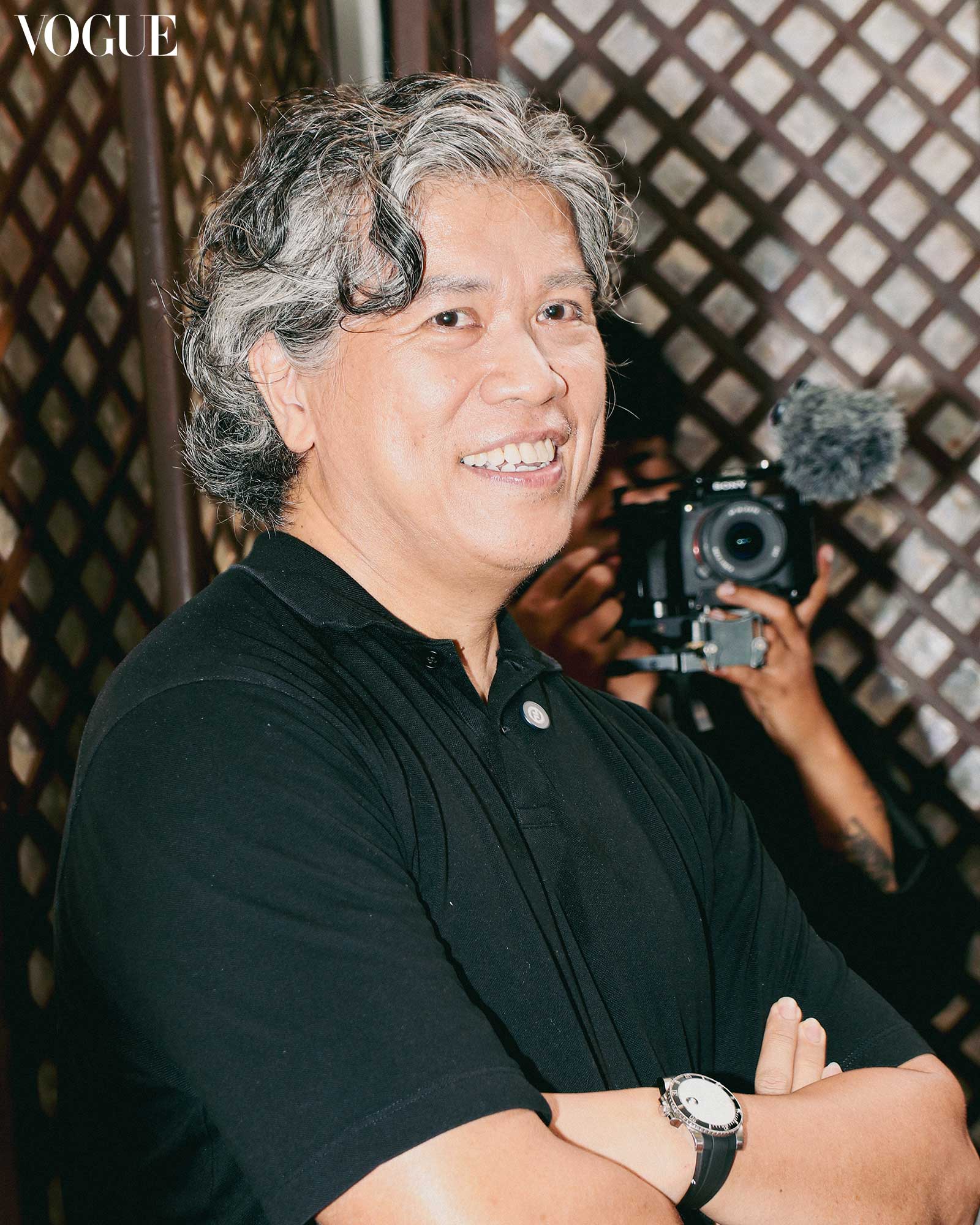

They crafted with piña, silk, and piña abaca; they referenced multiple themes that included malunggay or moringa, which was identified as “one of the world’s most useful trees and in the Philippines almost all parts of the plant are used for food and traditional medicine.” Noel Manapat, the show’s stylist, expounds: “The leaves of the malunggay were woven into the fabric. So you’ll have some fabrics with the weave of malunggay leaves, and at the same time, we also did appliqués and then embroidery.” These distinctly Filipino touchpoints trickled down to the afterparty, where guests were offered chicken inasal empanadas, calamansi-malunggay refreshers, halohalo, and more. Below, Vogue invites you to an exclusive peek behind the curtain.
- The Terno Today: Works by Our Seasoned Designers
- A Creative Middle Age: RAFGLANG and Mich Dulce Mark Their Runway Return at Bench Fashion Week
- The Balintawak Reimagined: “Bench Presents Ternocon” At Tokyo Fashion Week
- Filipino Roots Anchor Puey Quiñones and Dennis Lustico’s Paris Fashion Week Collections

